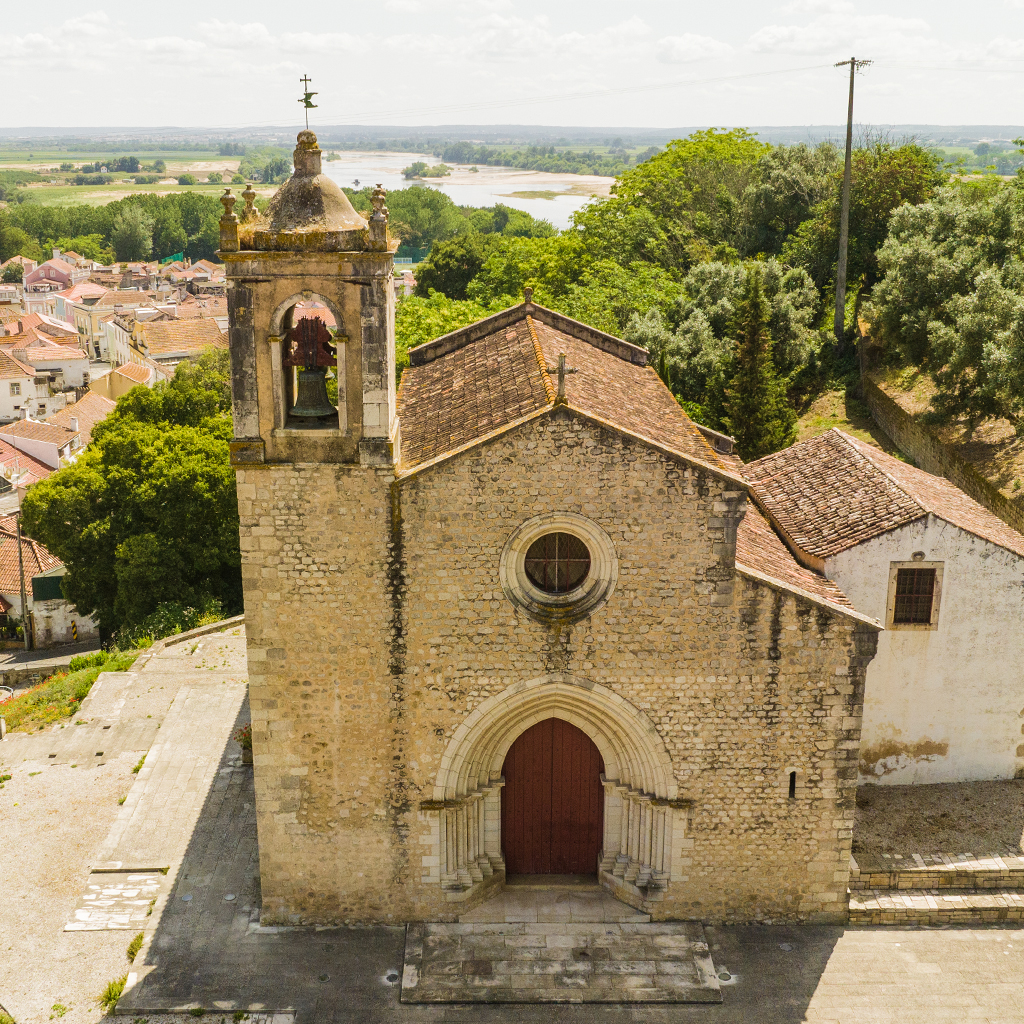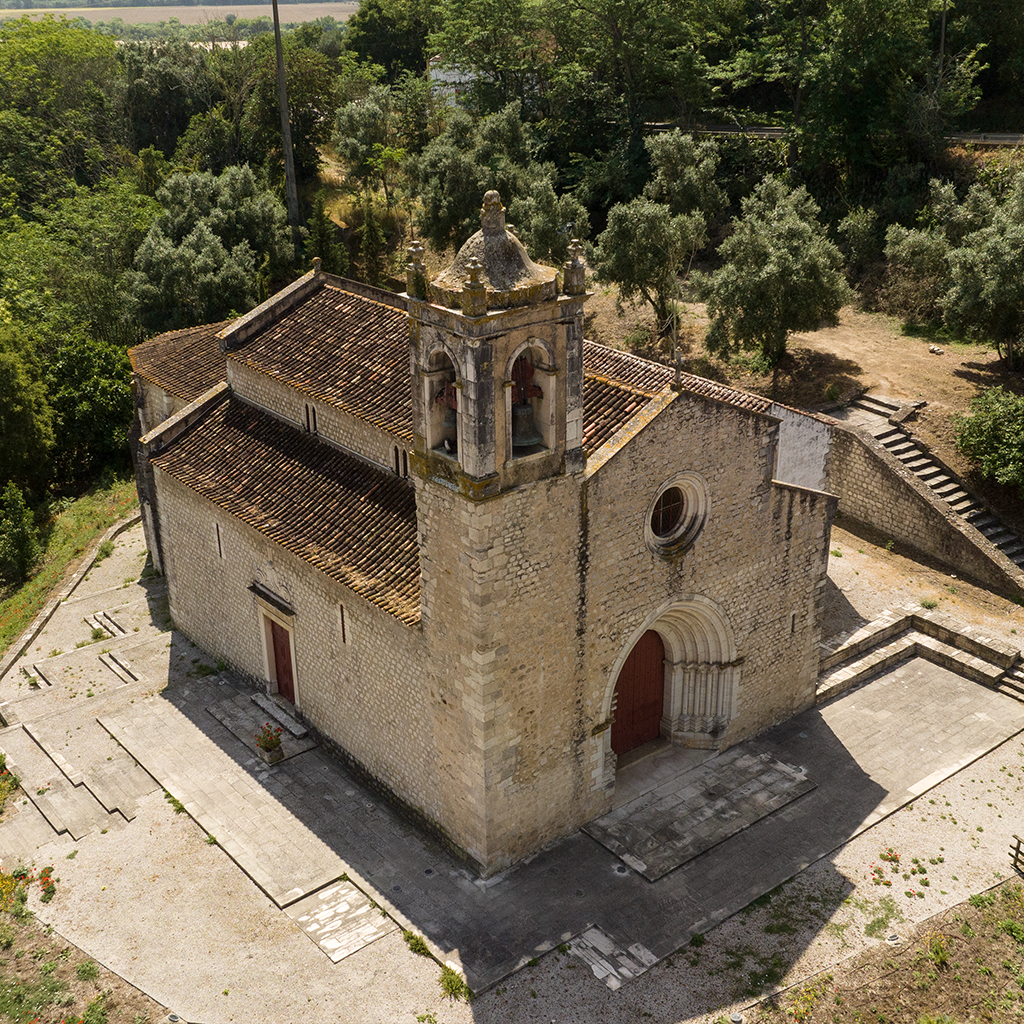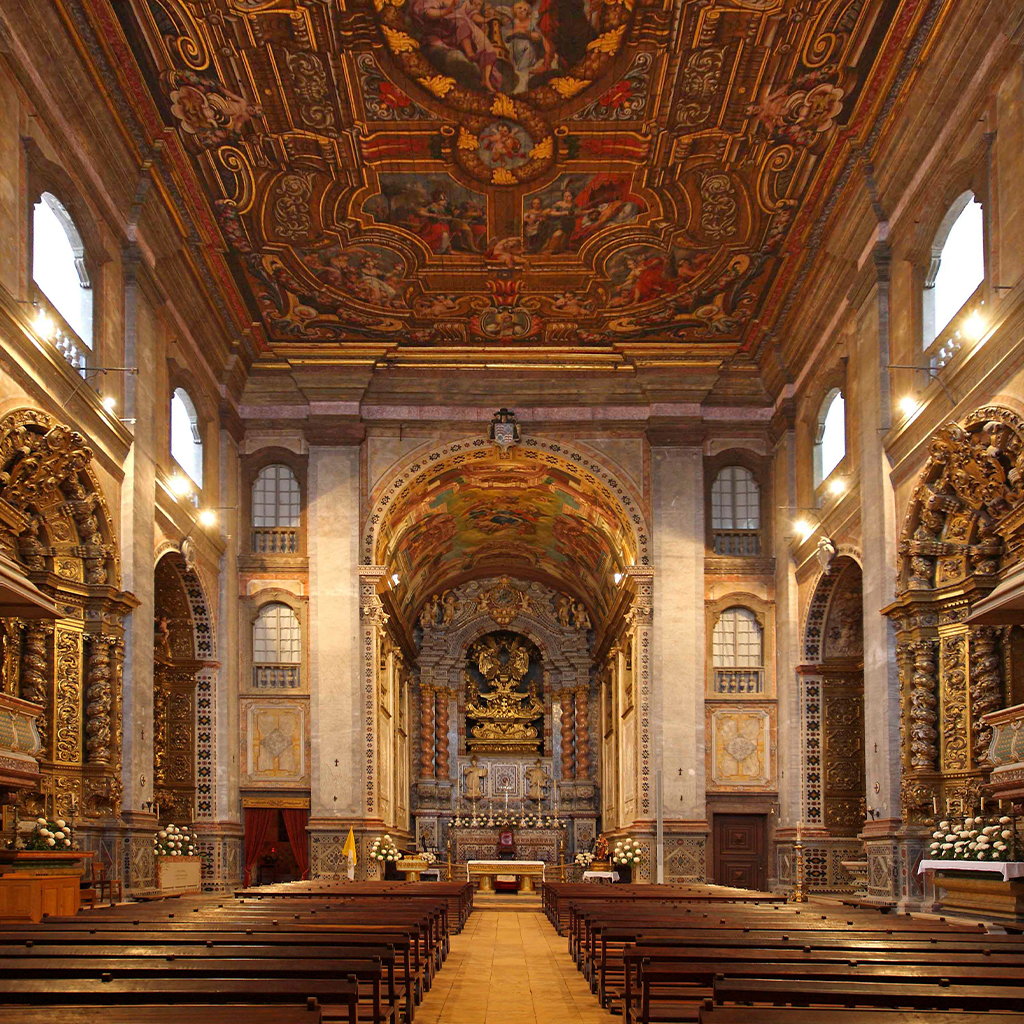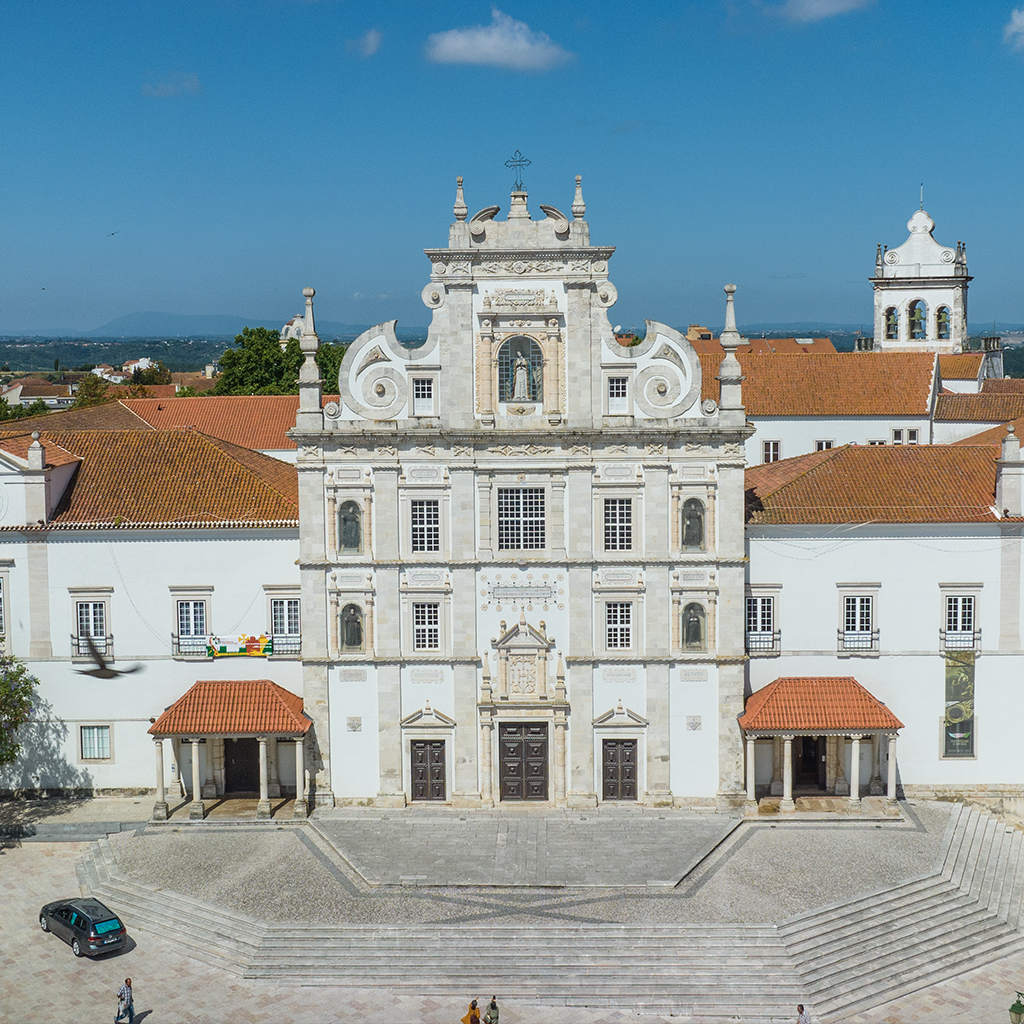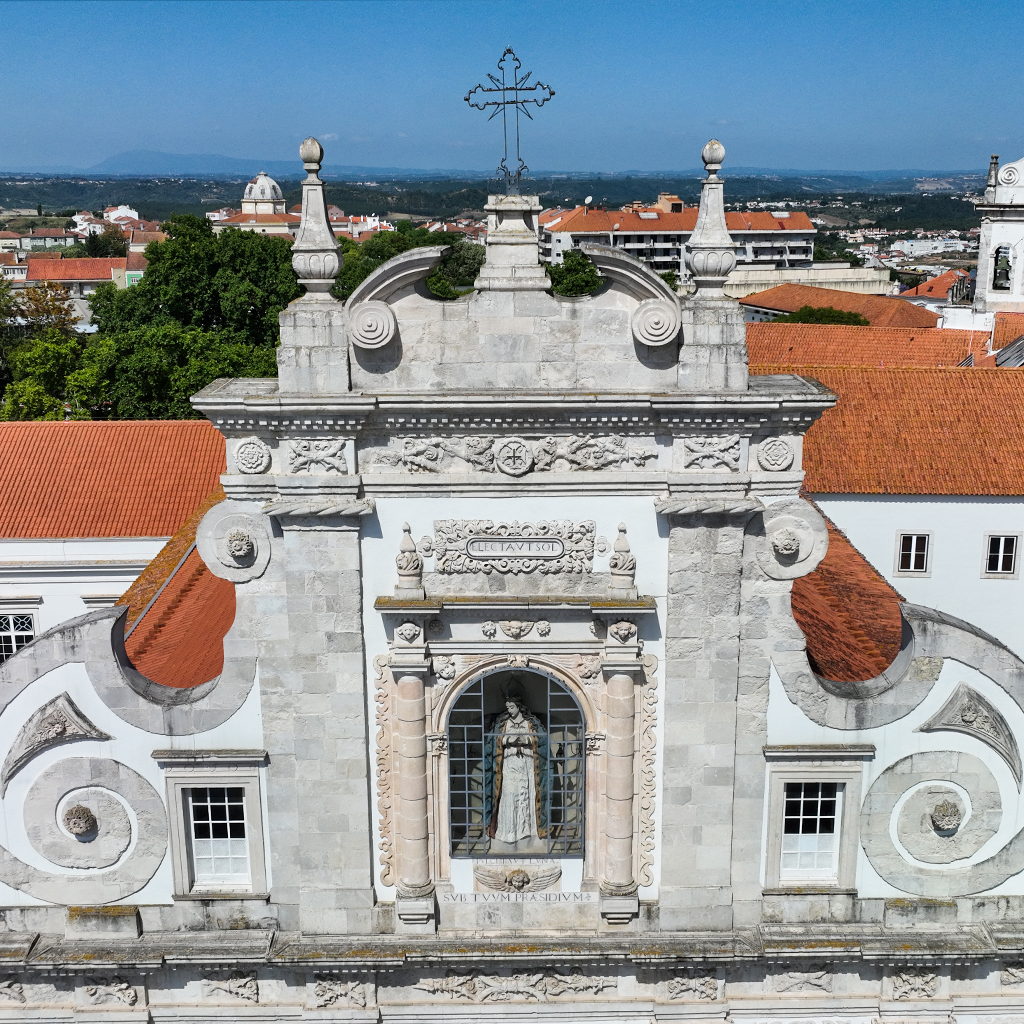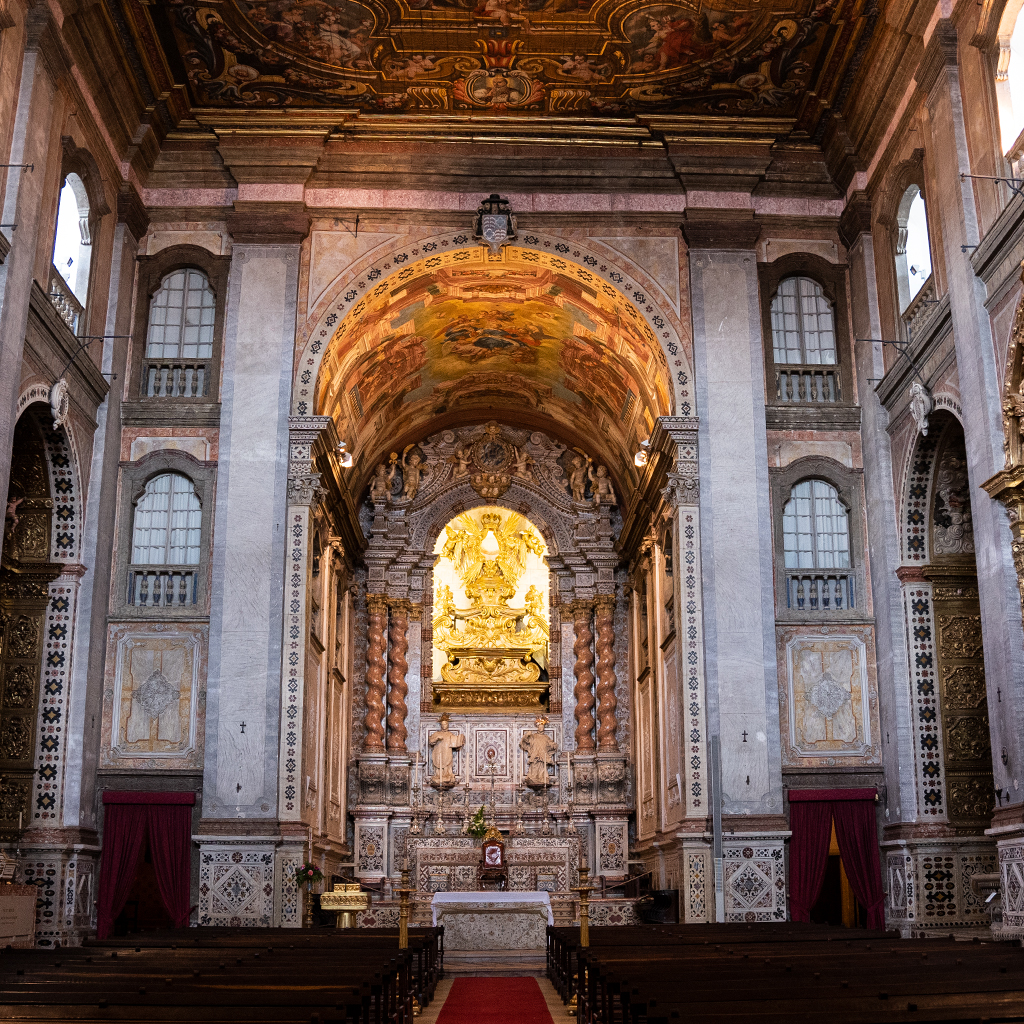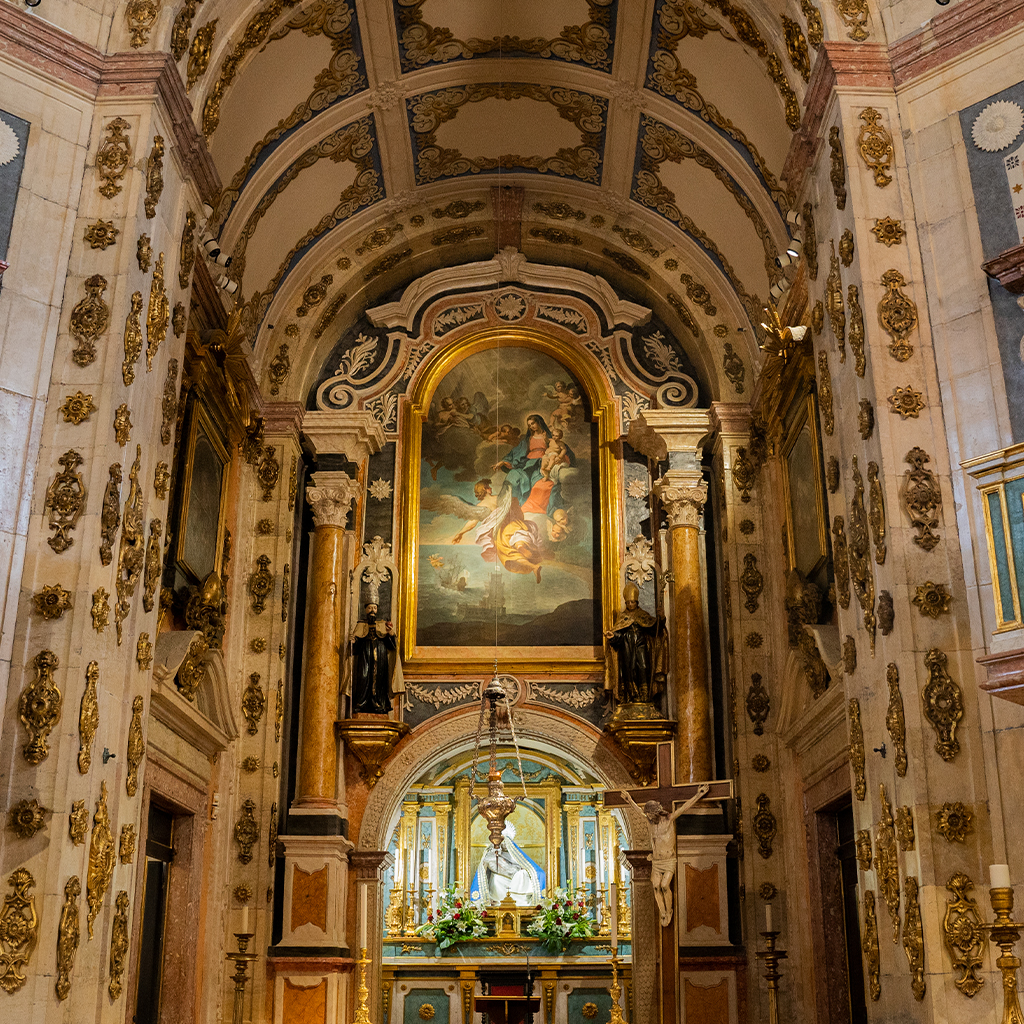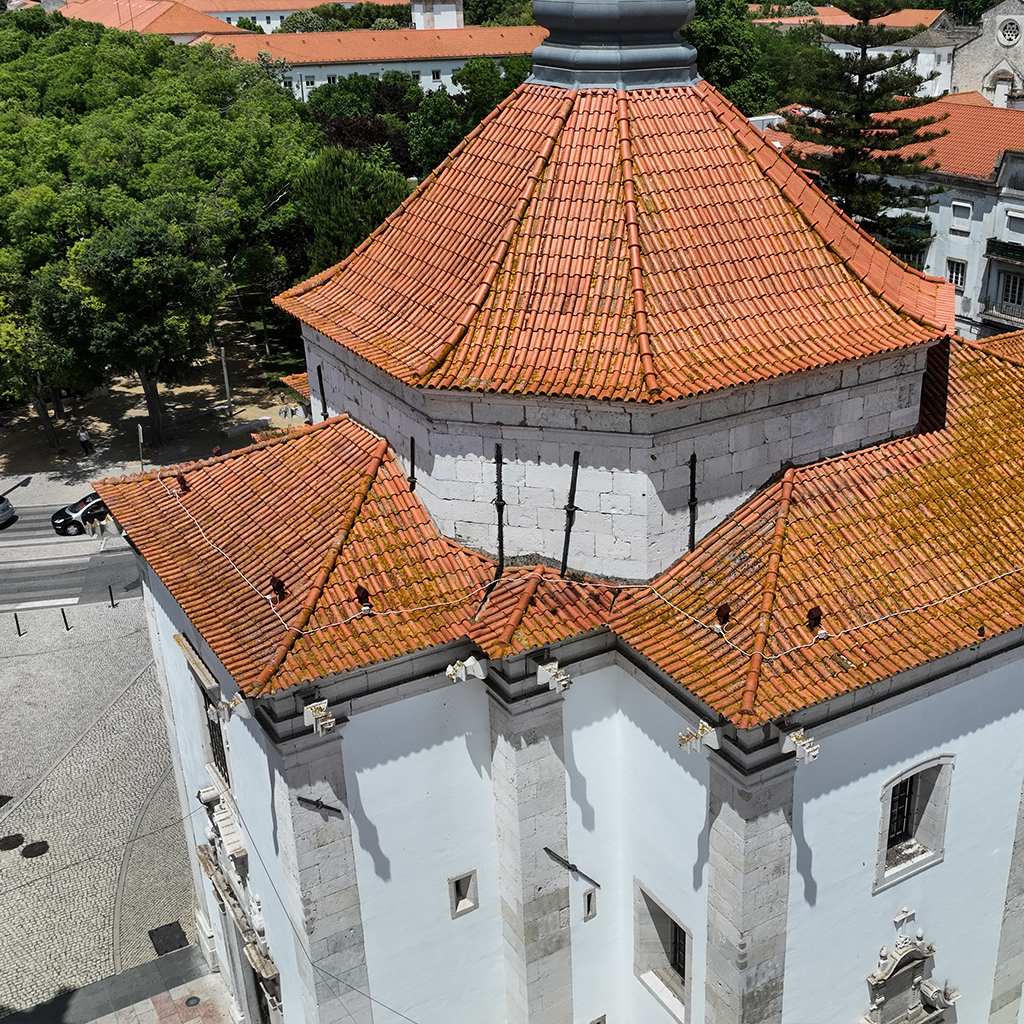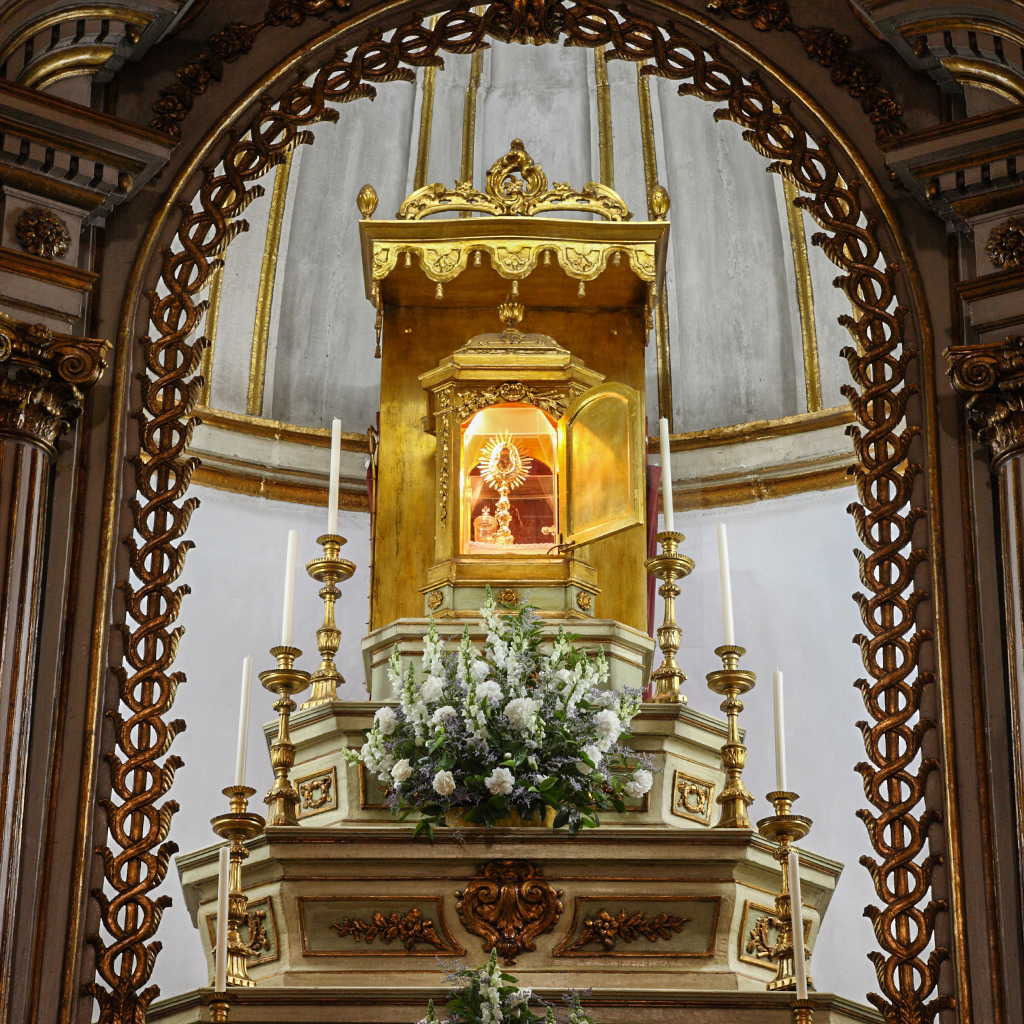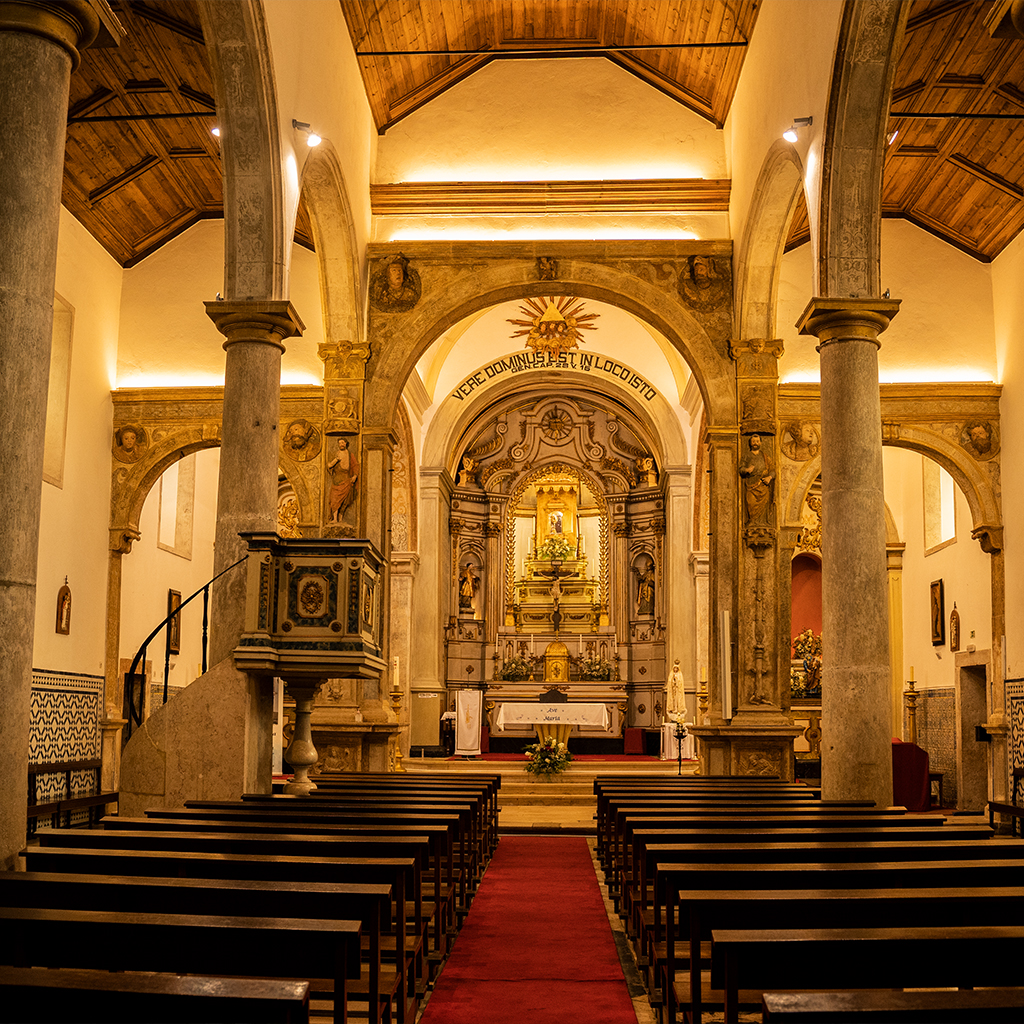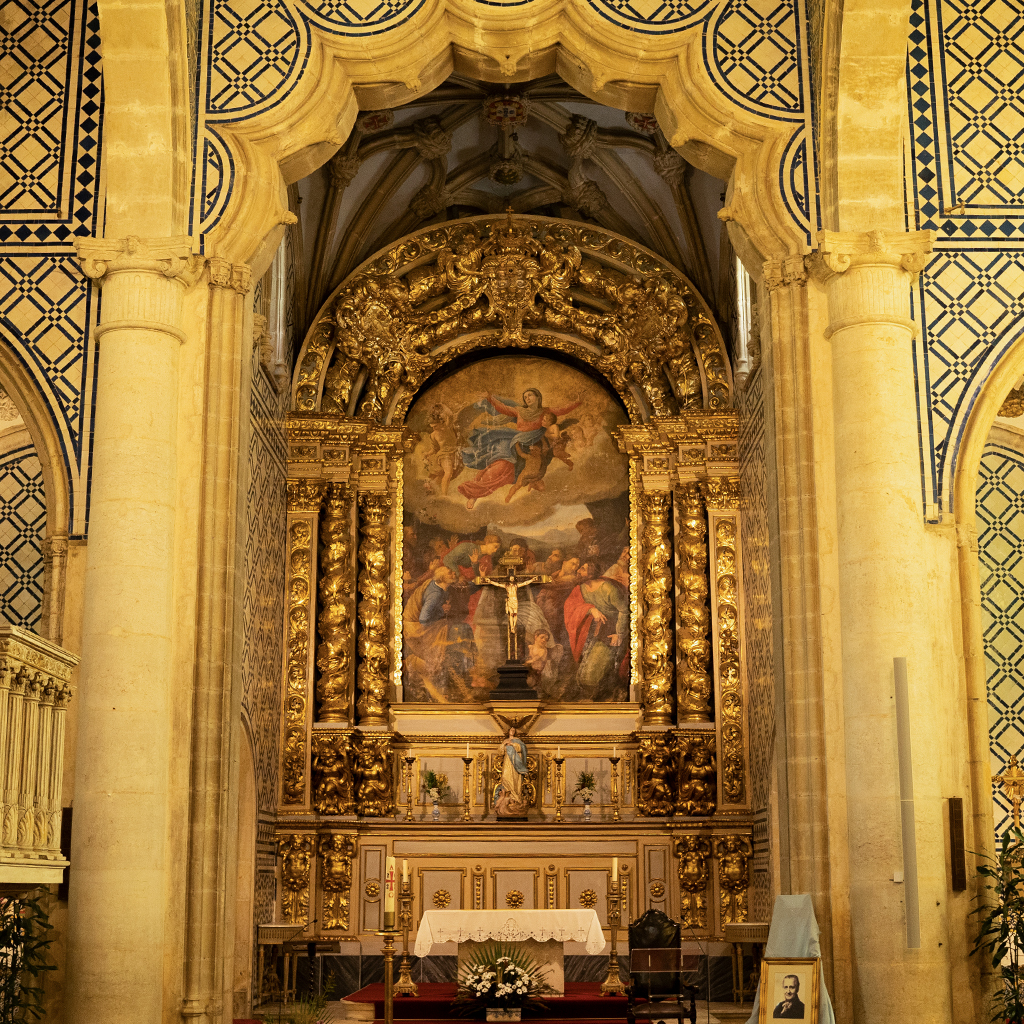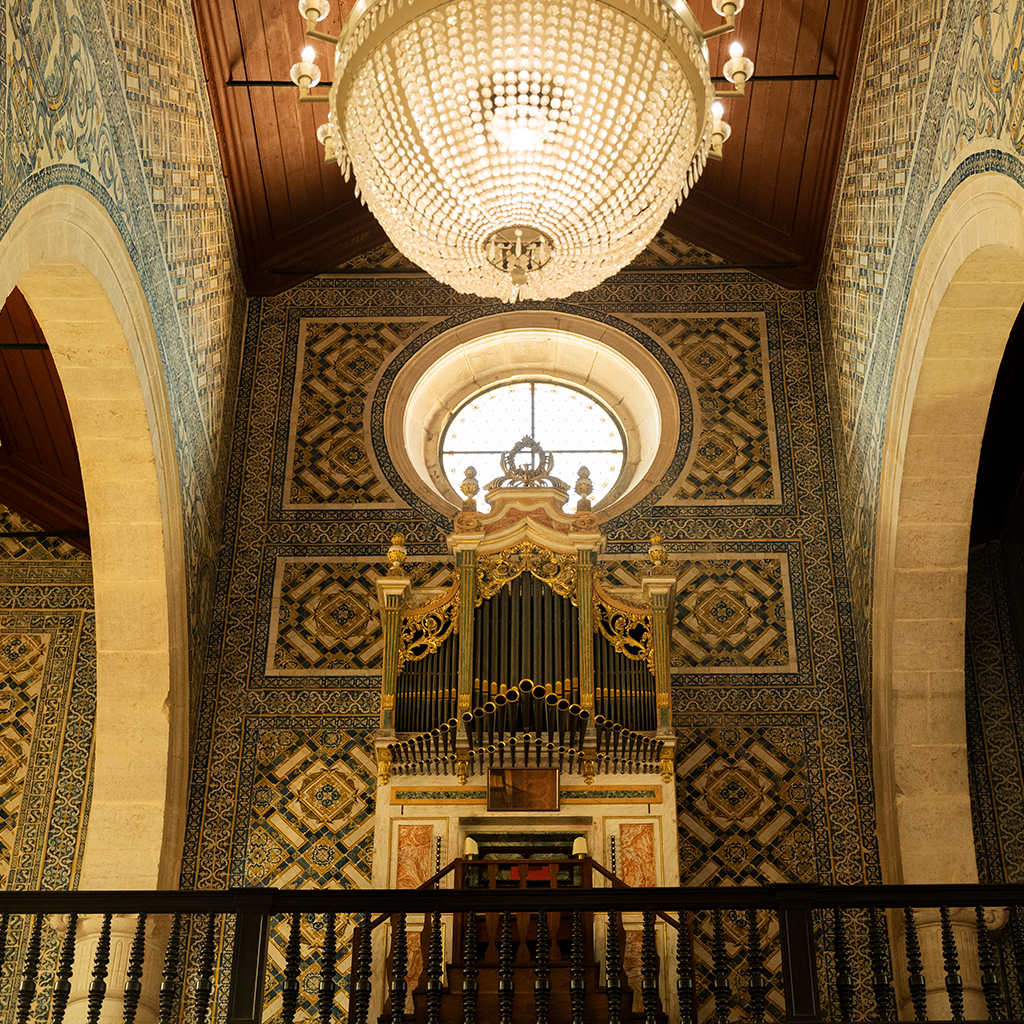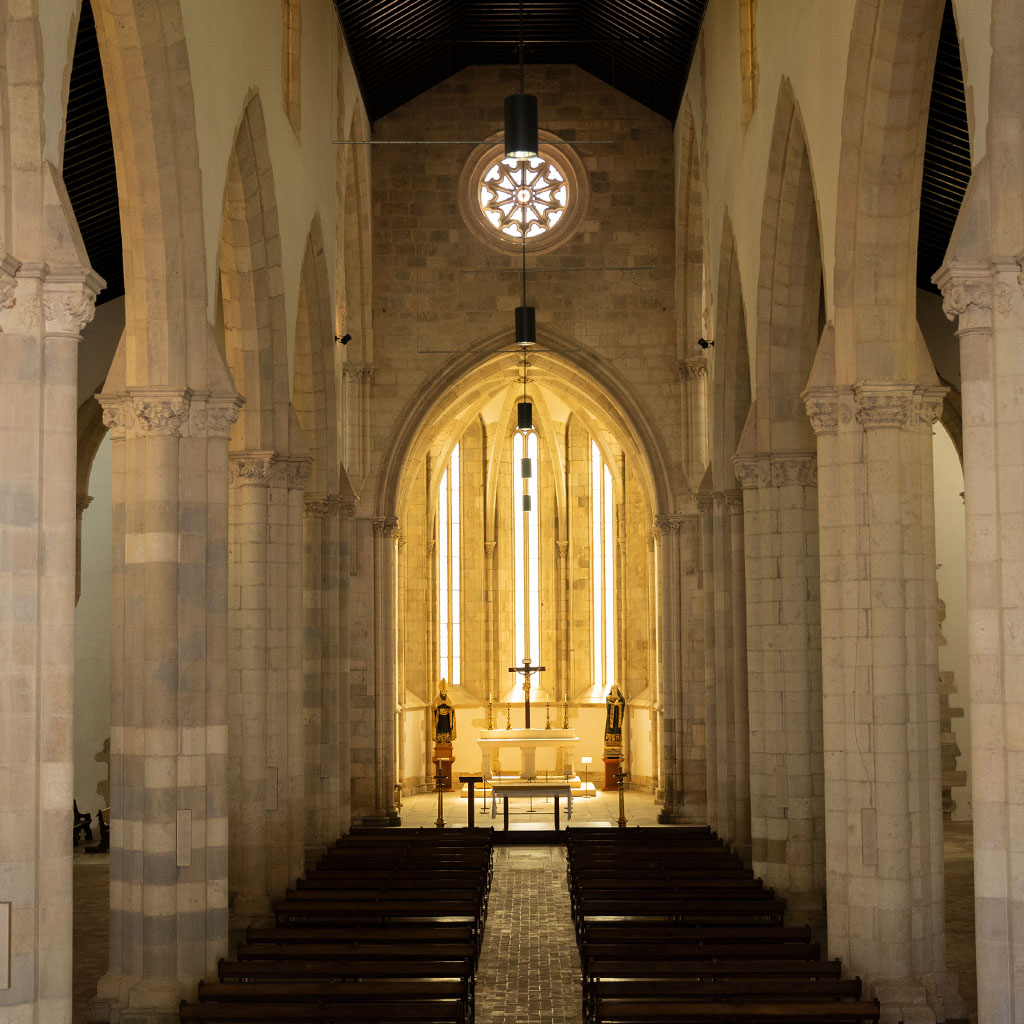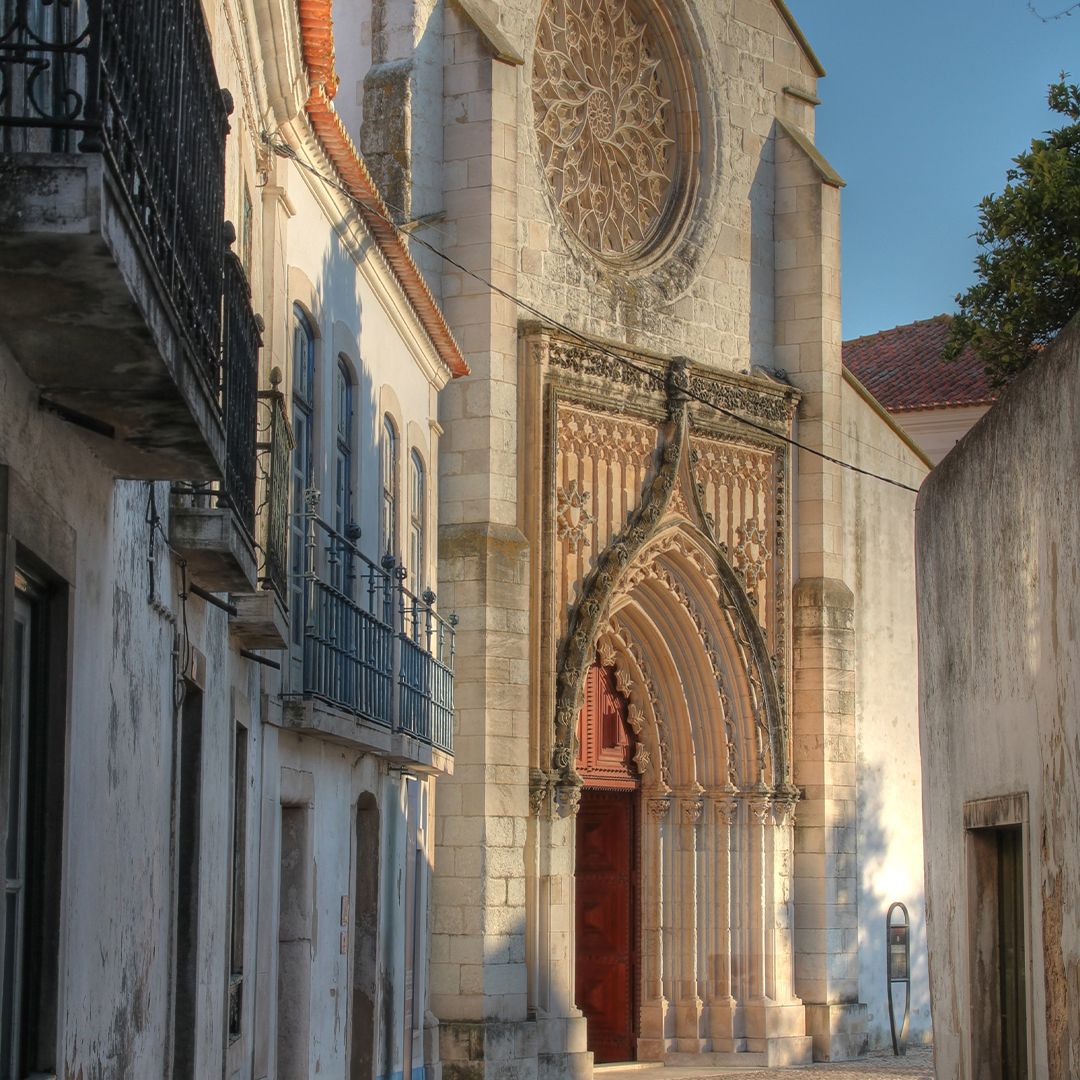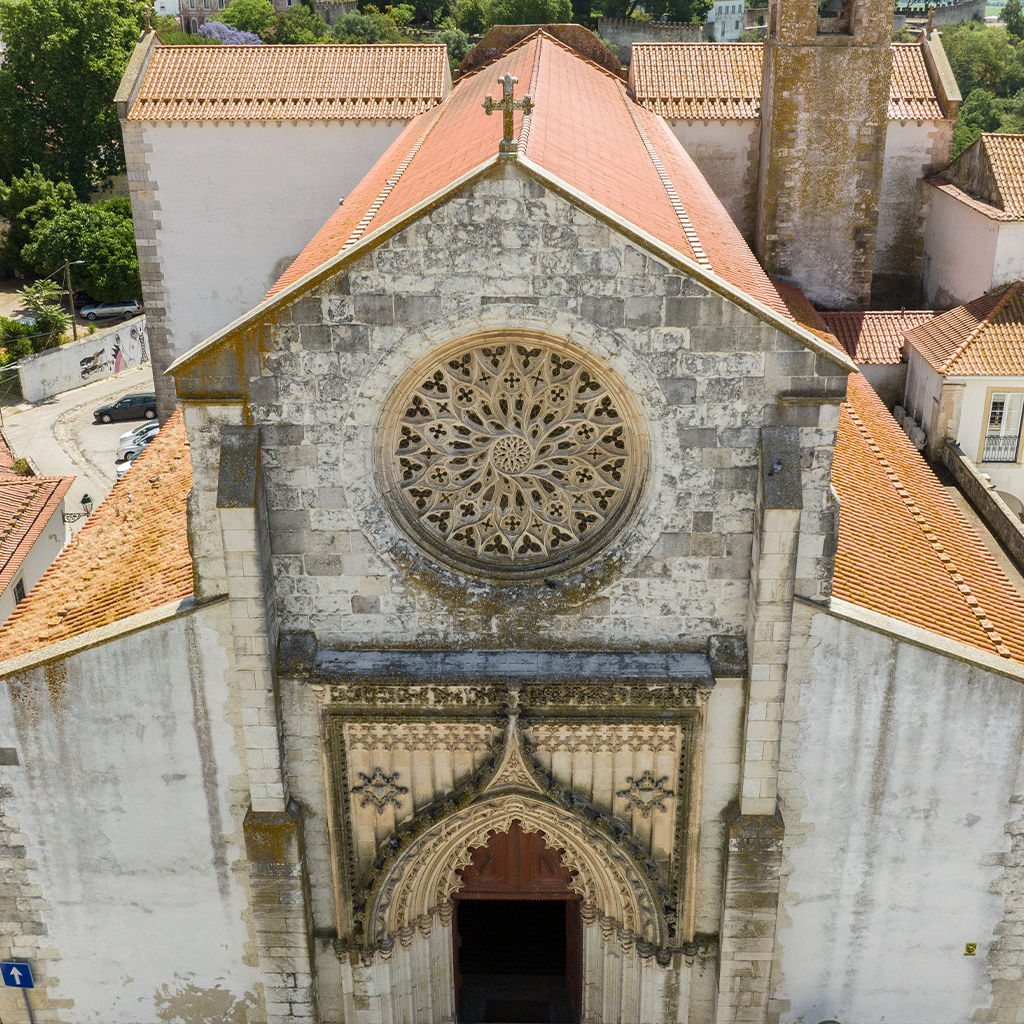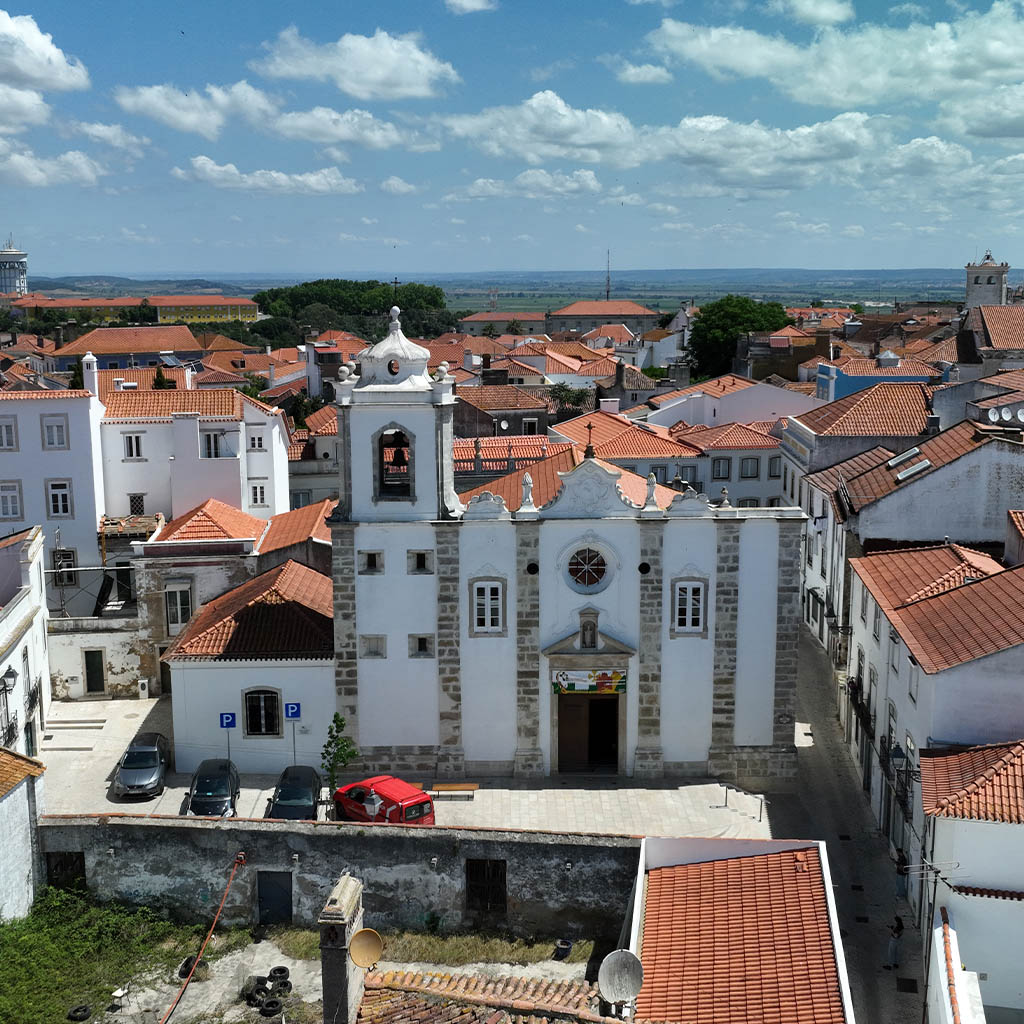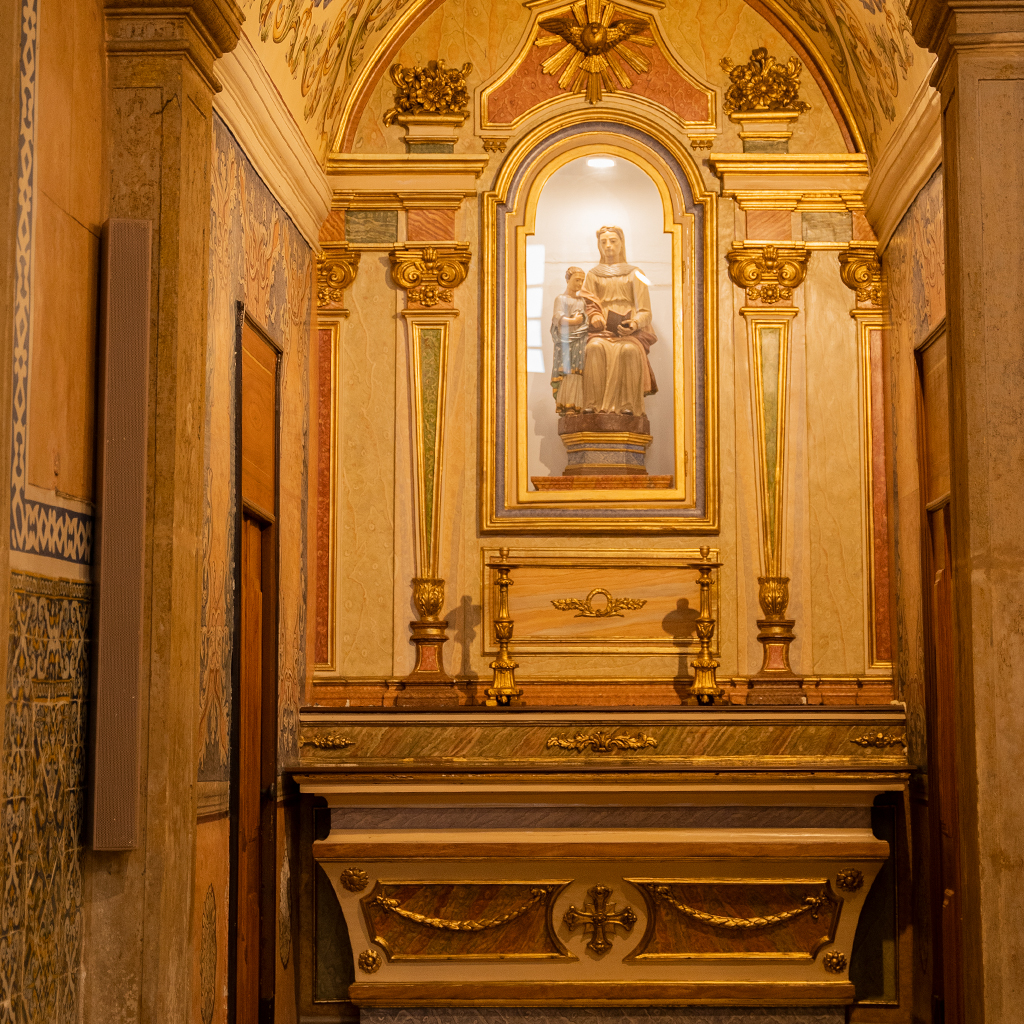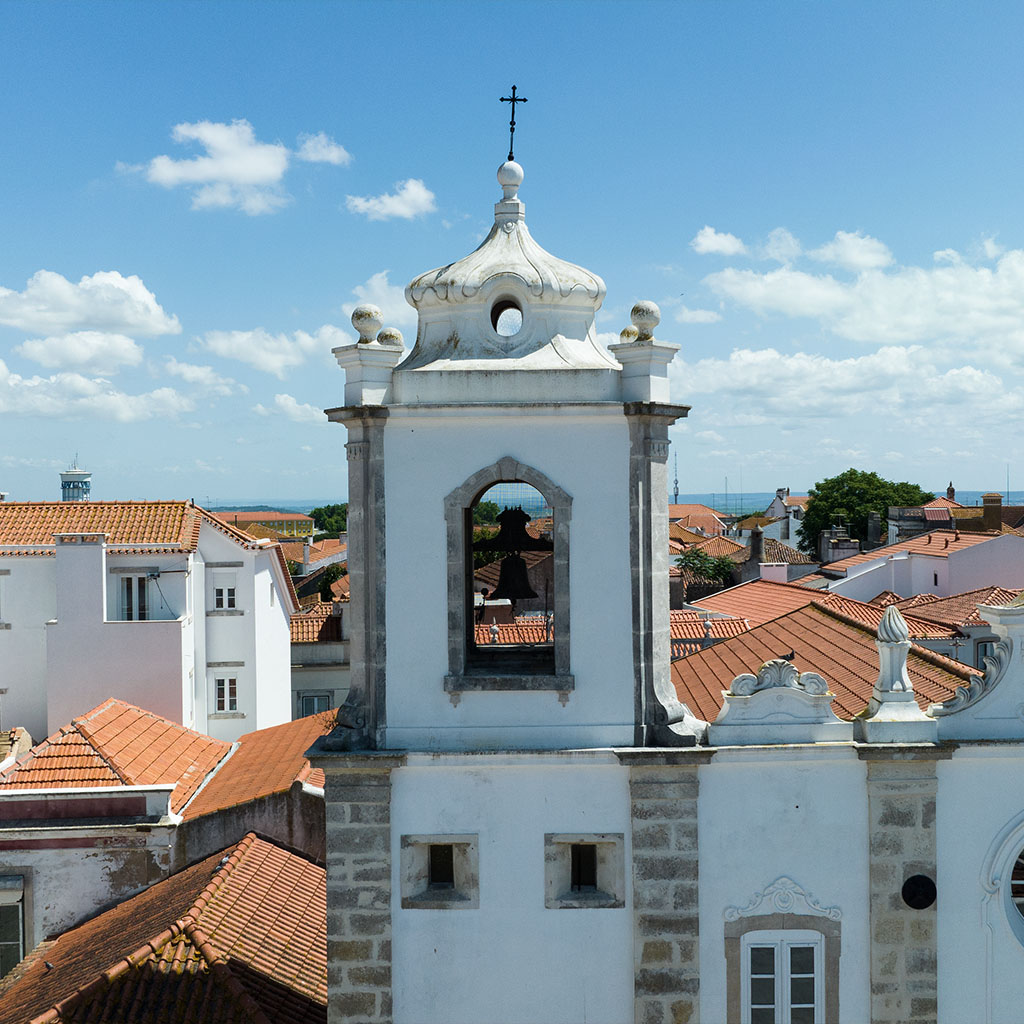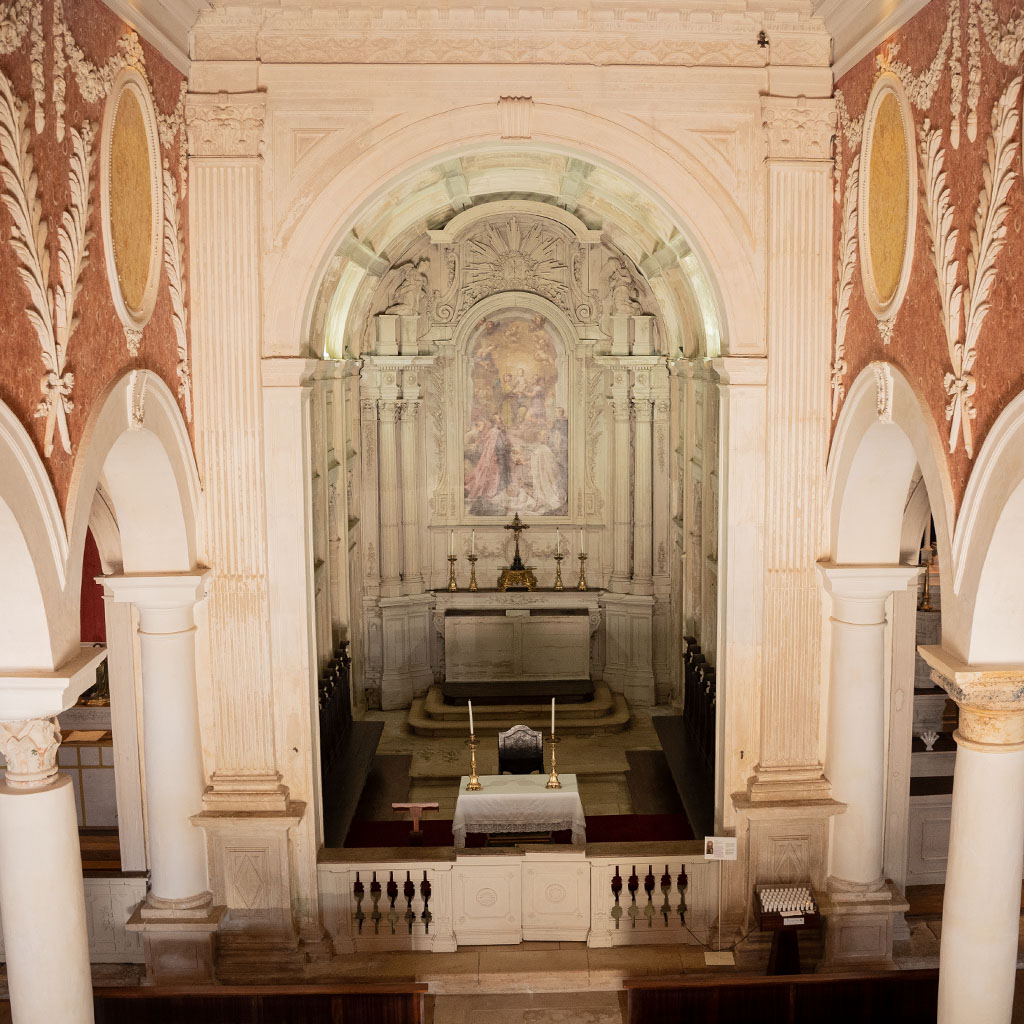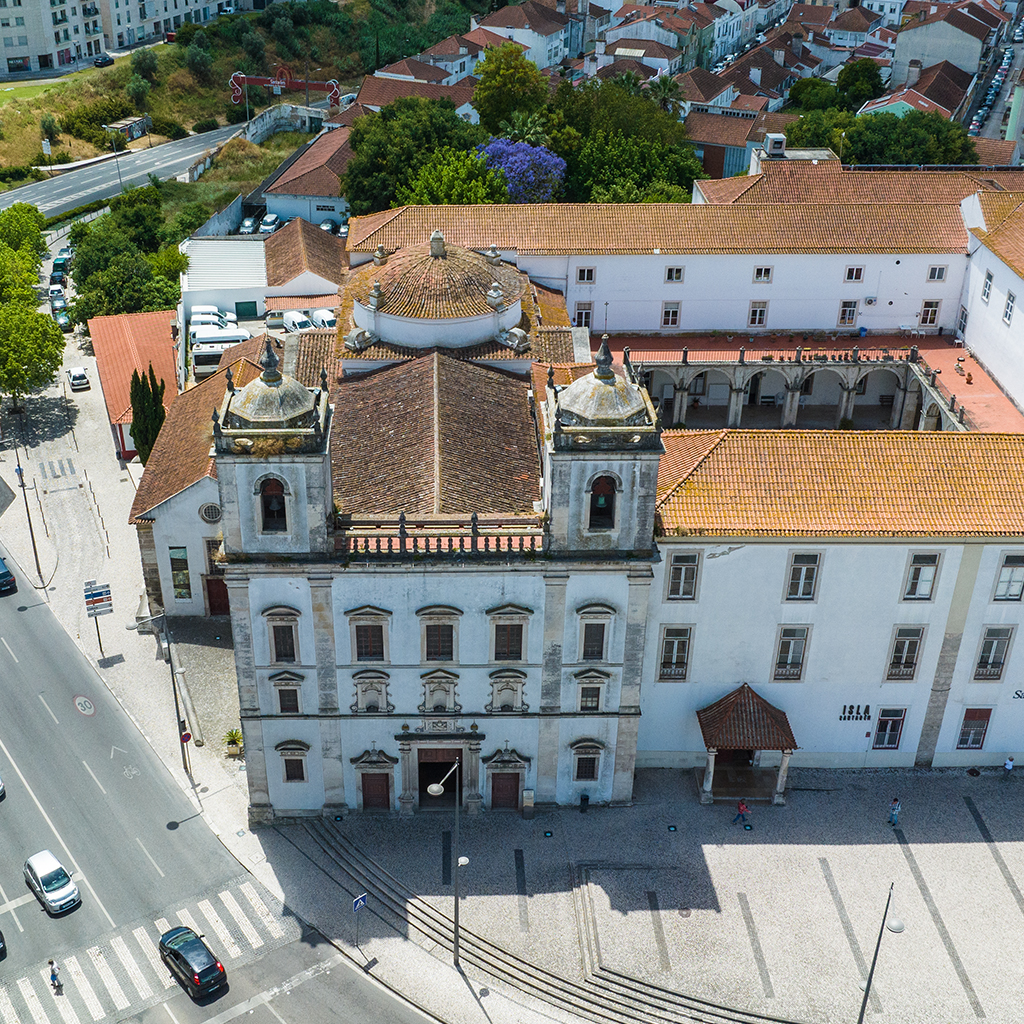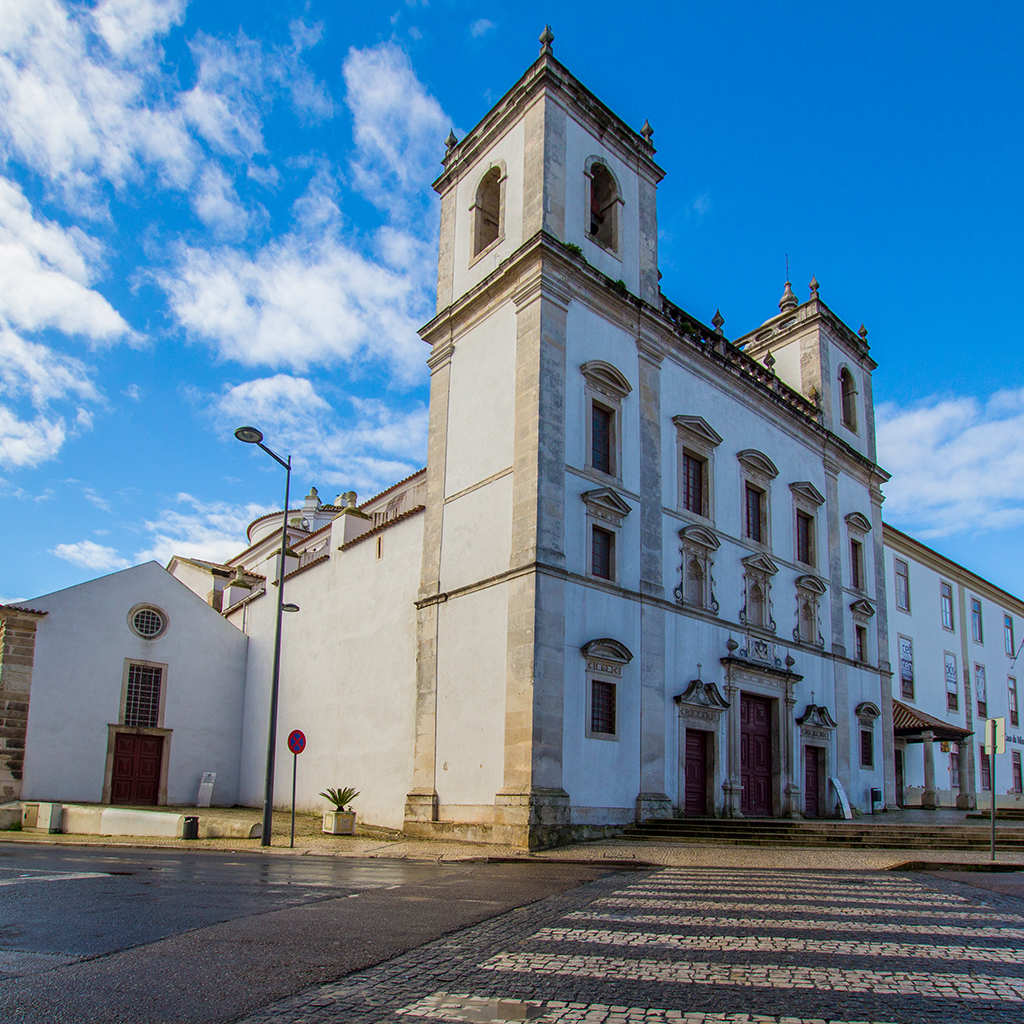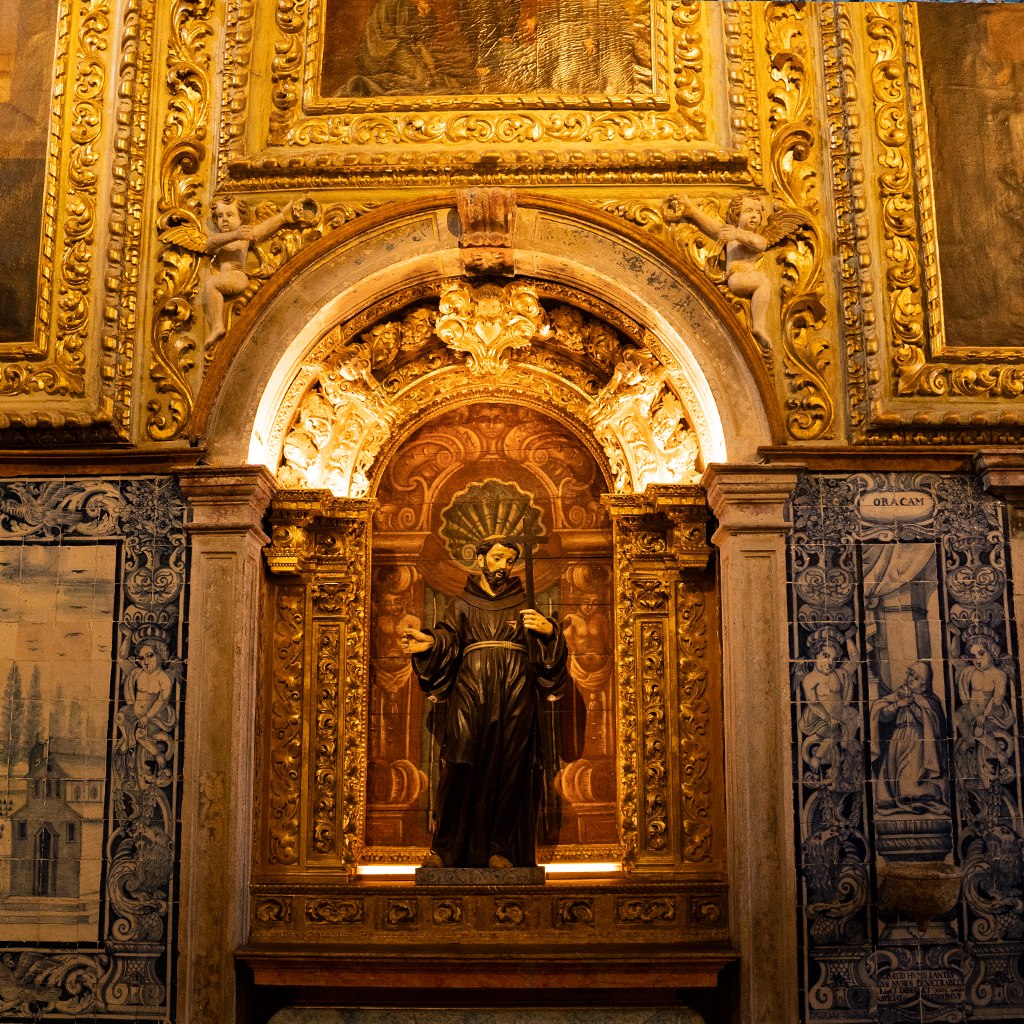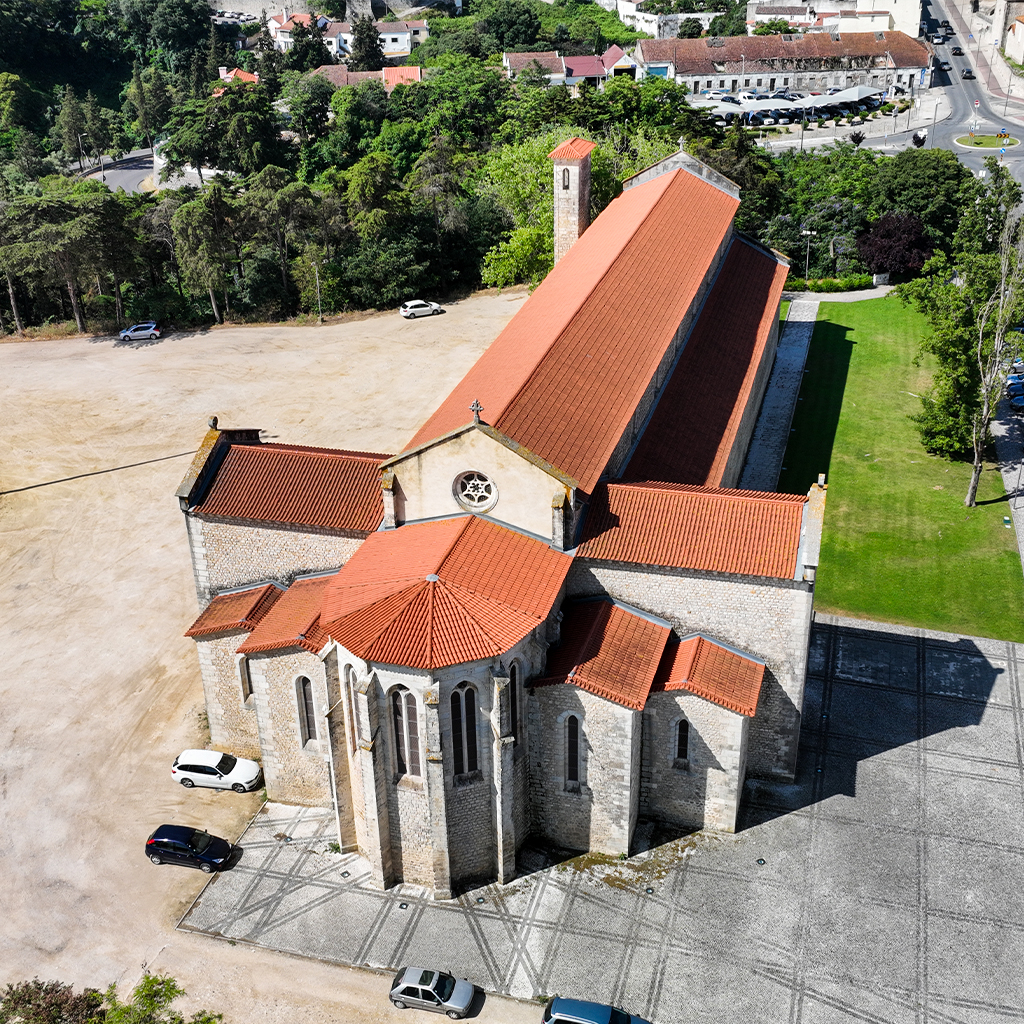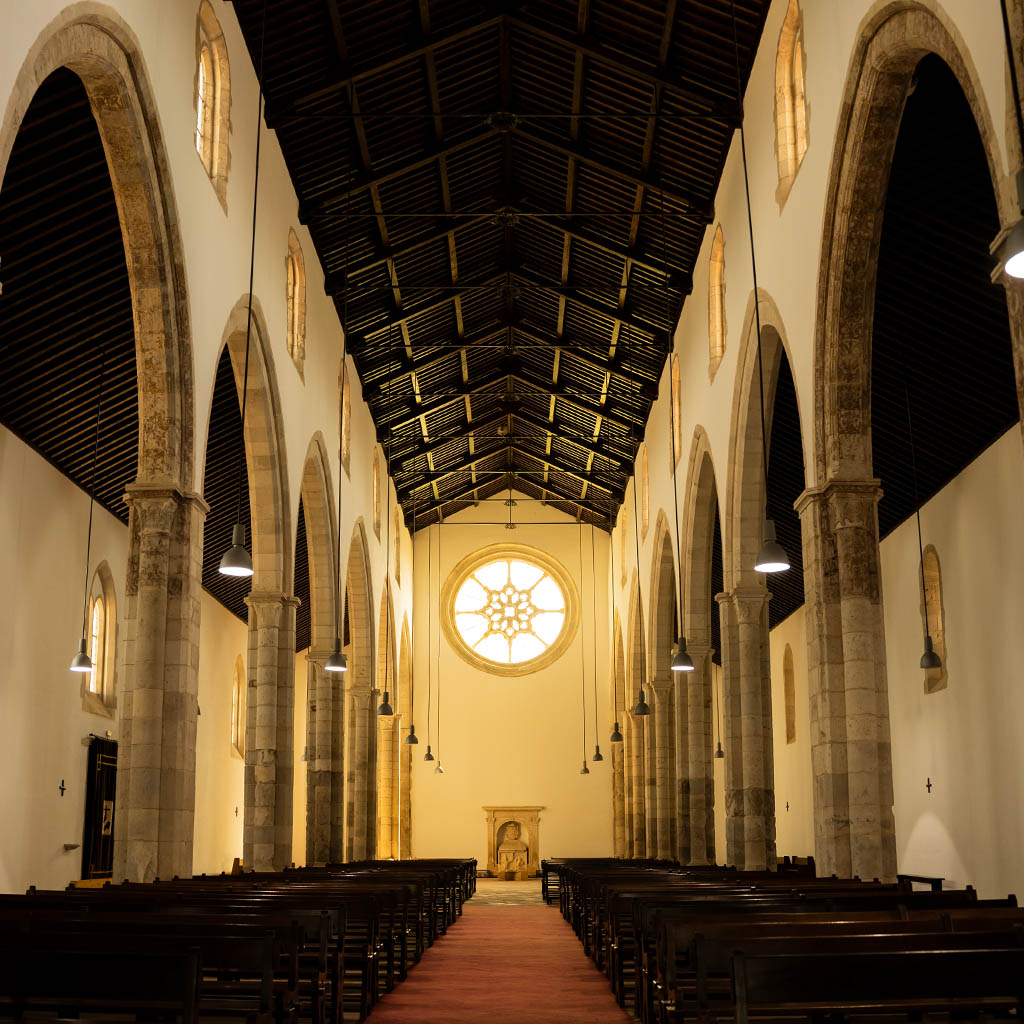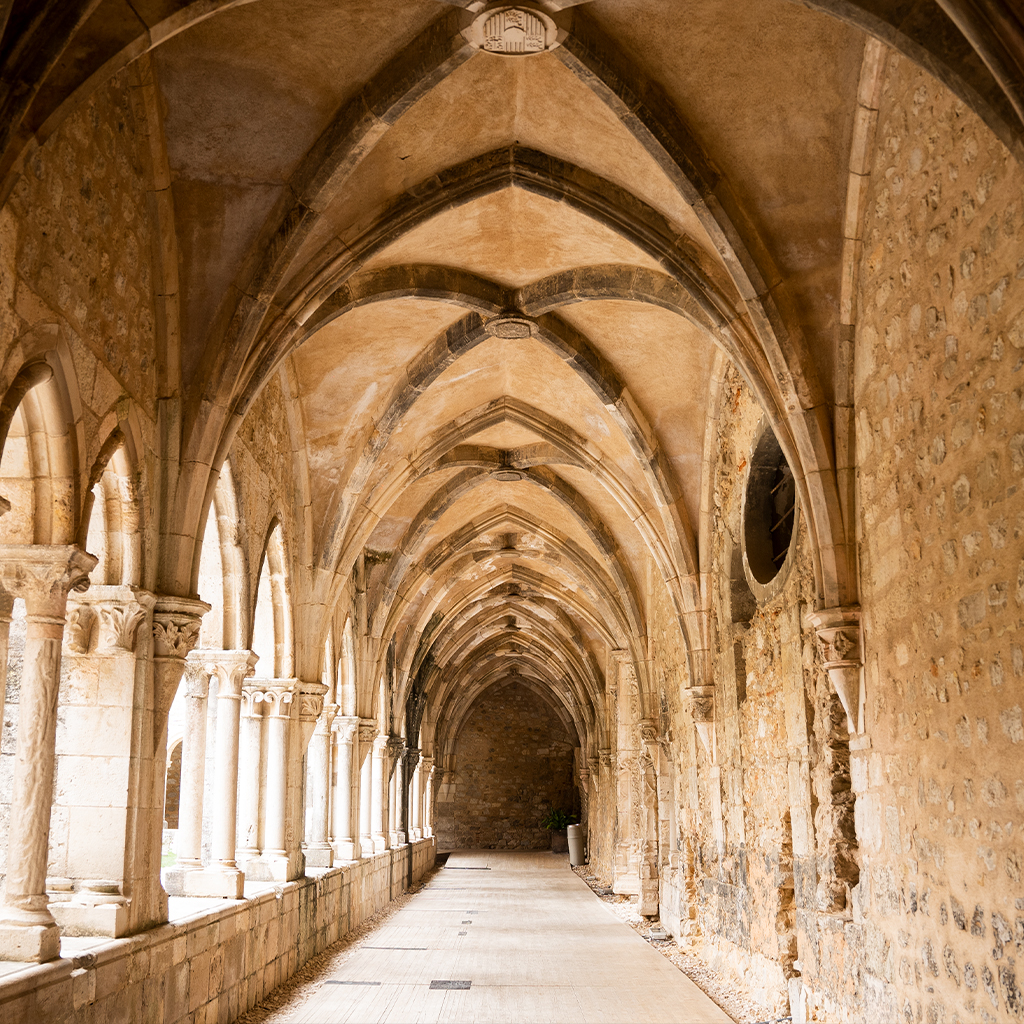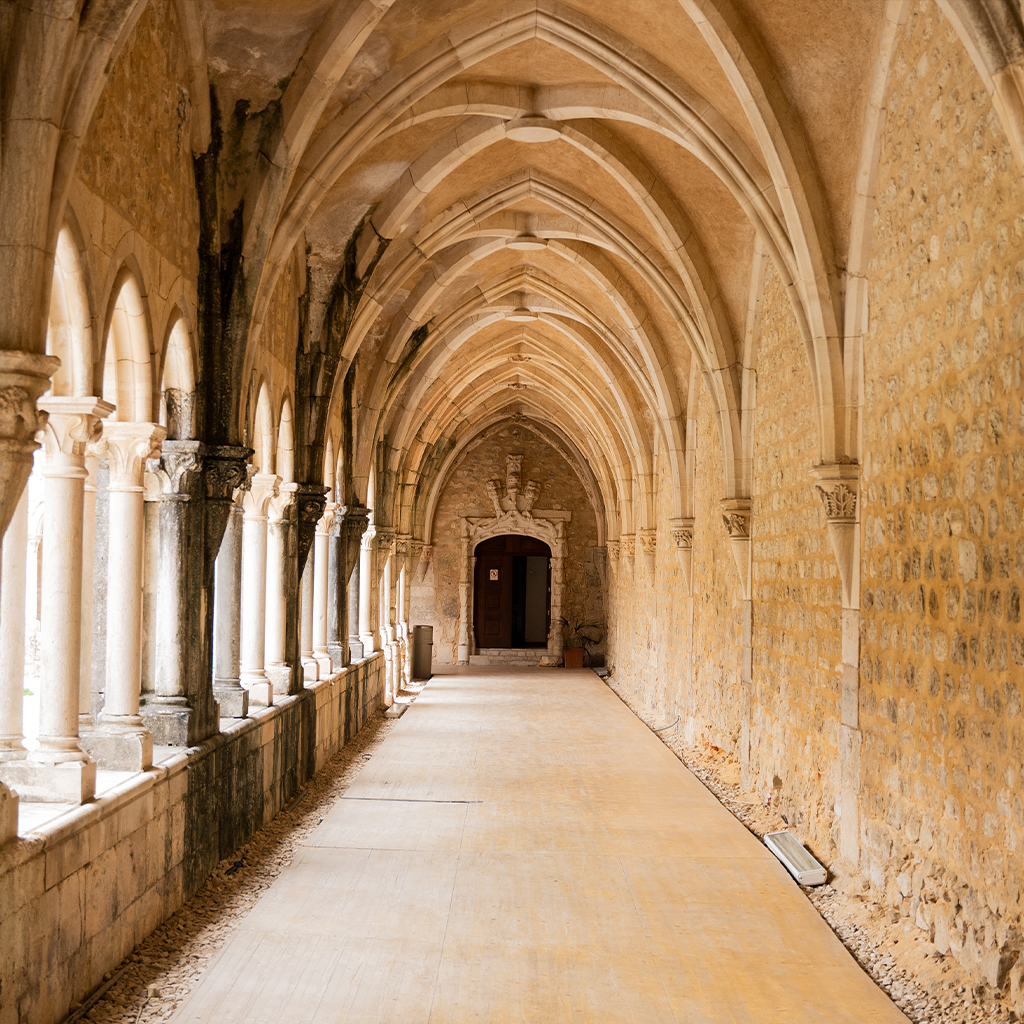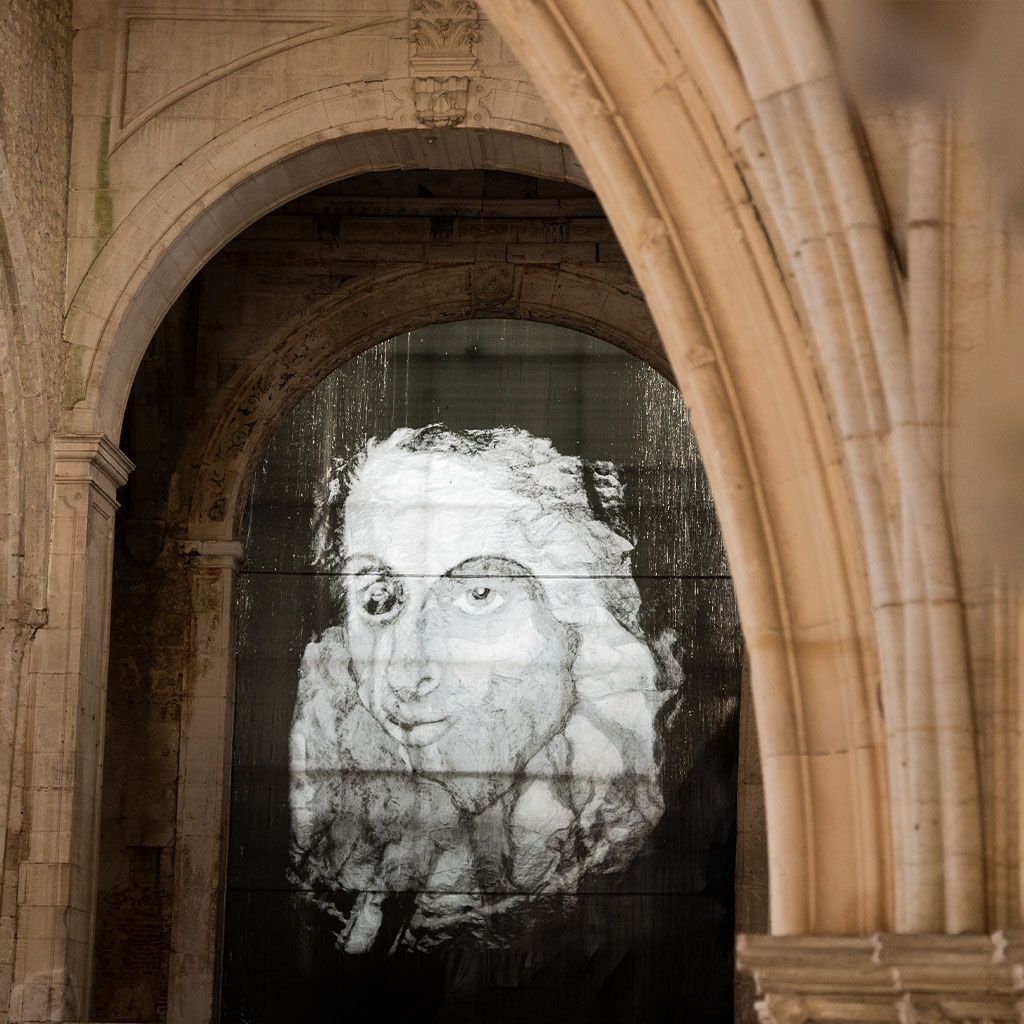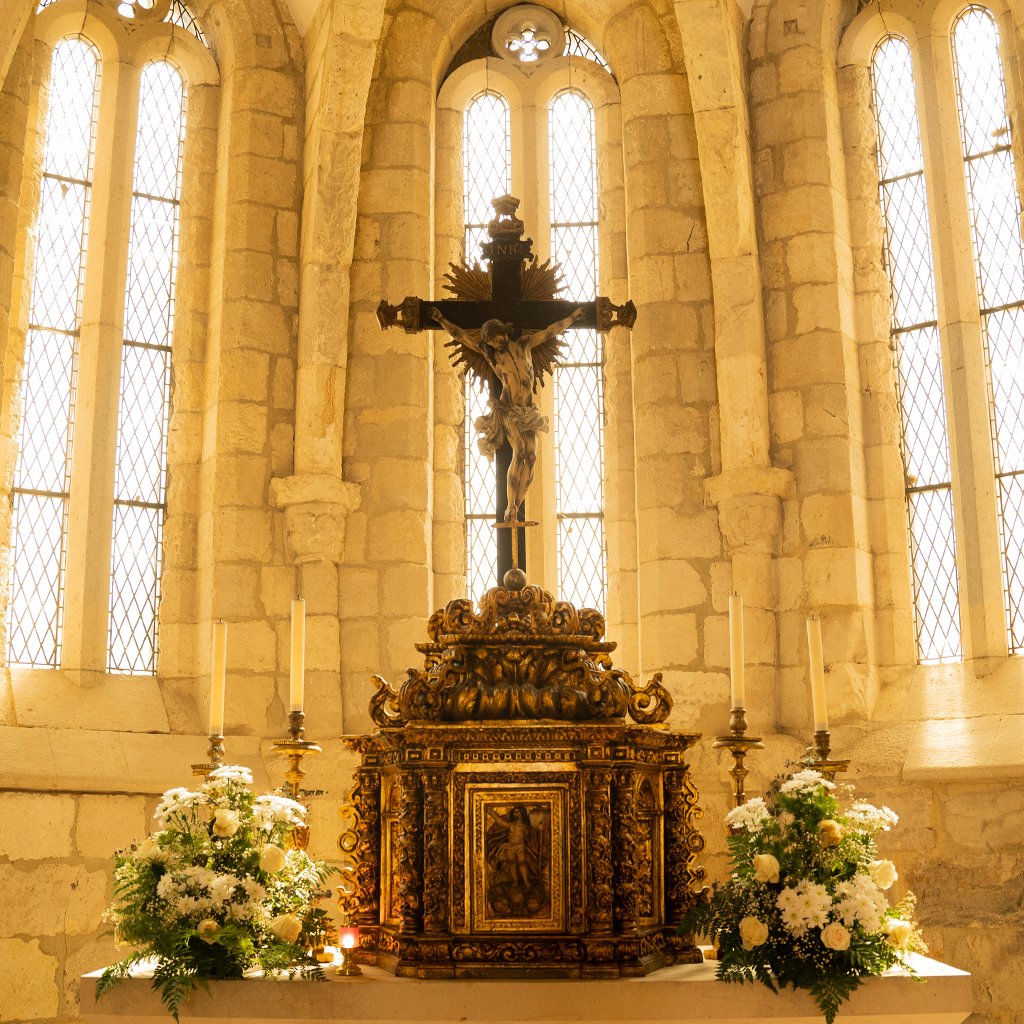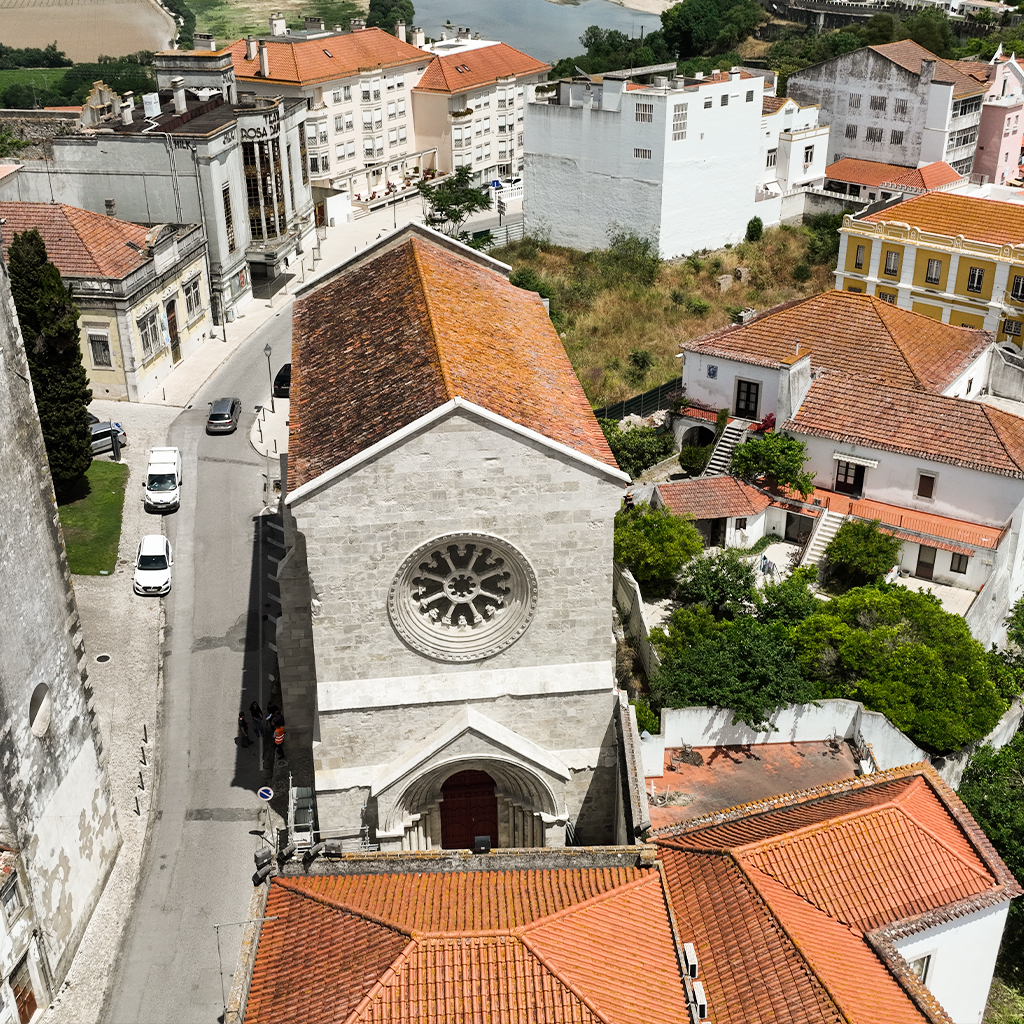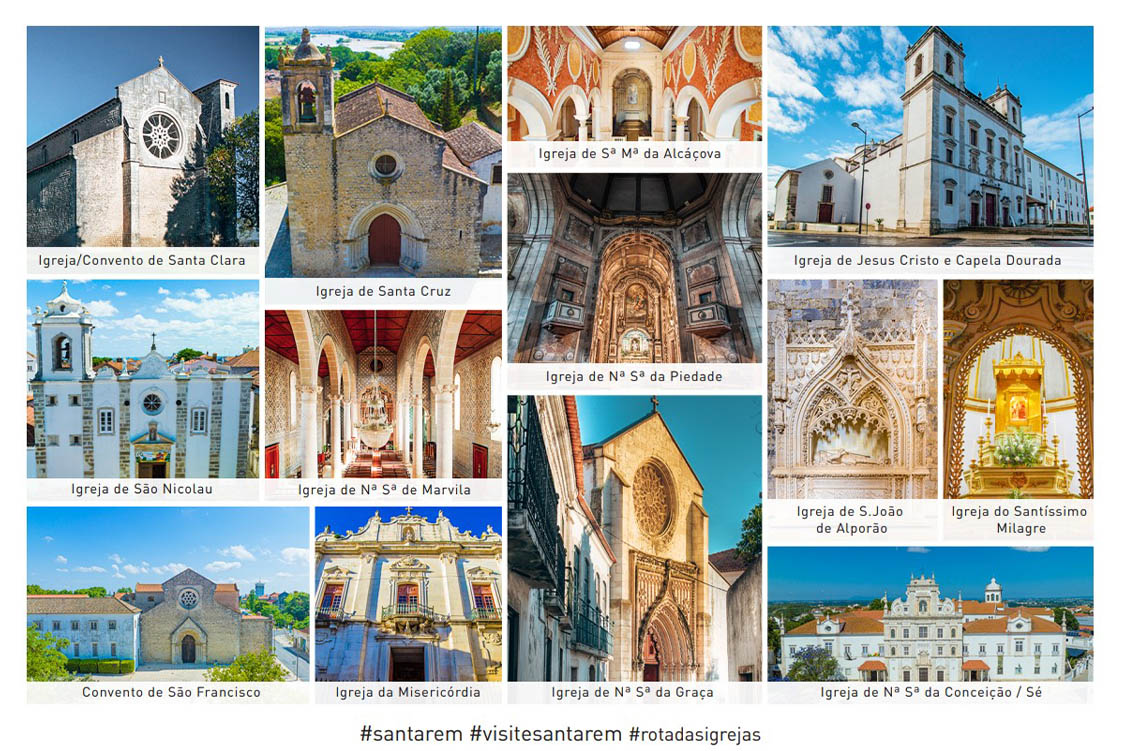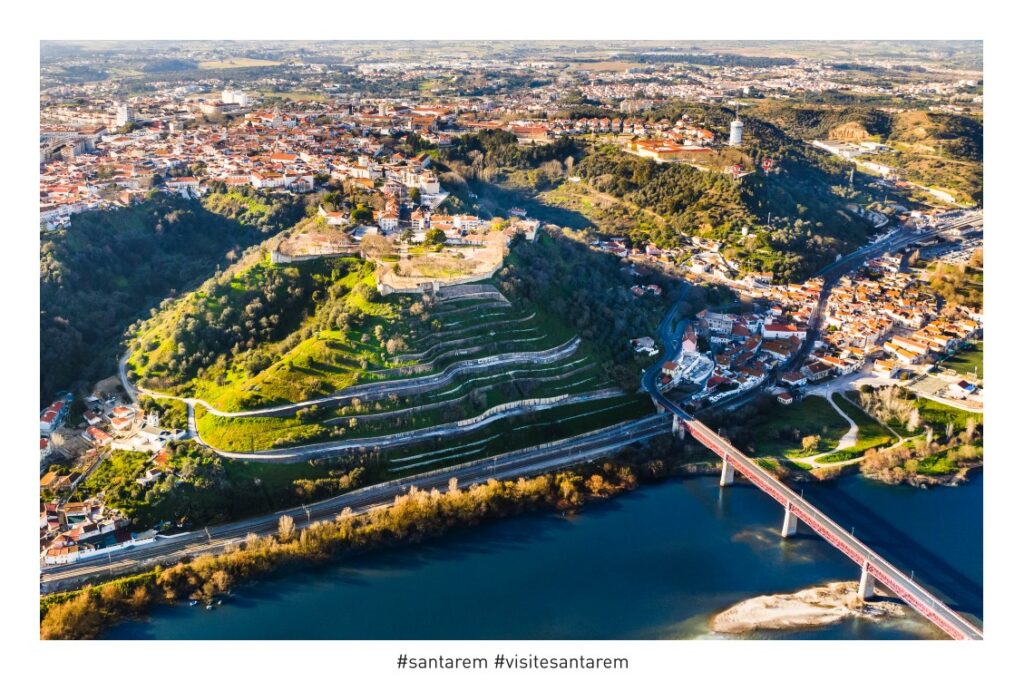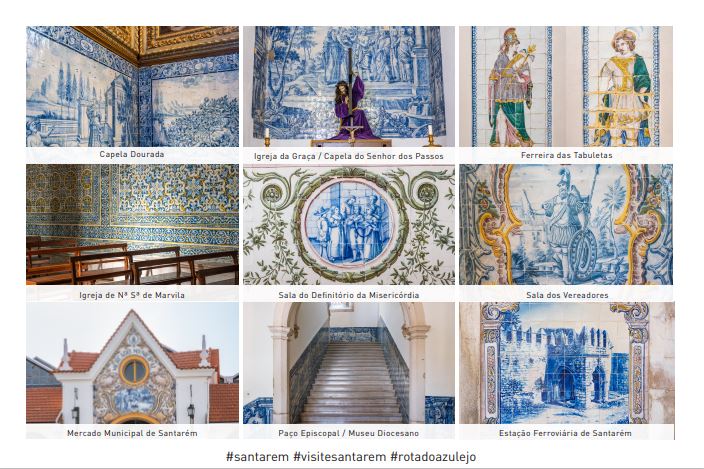
- promotional video
- CHURCH OF SANTA CRUZ
- CHURCH OF SANTA CRUZ
It is one of the most representative Calabrian monuments of the Gothic style, being of Public Interest since May 2nd, 1950.
The church was built in the thirteenth century, and the exact date of its institution is unknown, knowing only that it was sponsored by the crown.
In the 14th century, the Tempio was rebuilt by initiative of Count Lourenço Domingos Minatos and his wife, Iria Afonso Caeira, who are buried in the main chapel.
During an intervention carried out in 1967, the magnificent Gothic primitive door, which had been boarded up, was uncovered and reintegrated into the façade. The Baroque doorway, dating from 1712, was then transferred to the east wall of the Casa da Irmandade.
Despite being one of the most representative Gothic monuments, this nice church includes elements of other architectural currents, such as the Renaissance and Baroque.
- Misericórdia Church of Santarém
- Misericórdia Church of Santarém
Monday and Tuesday
Closed
Wednesday to Sunday
9H-12H:30 | 14H-17H:30
The Igreja da Misericórdia de Santarém, also known as Igreja de Nossa Senhora da Visitação, is located in the historic center of Santarém, more specifically in Rua Primeiro de Dezembro.
The Church project was made in 1559 by the royal architect Miguel Arruda, one of the most important of the time in Portugal. The works were directed by the masters Simão Fernandes and Álvaro Freire.
In 1603, the Misericórdia de Santarém brotherhood officially established its headquarters in the building attached to the Church.
The Church hides inside one of the most impressive architectural and artistic spaces in Santarém. The paintings “O Repouso da Fuga para o Egipto” by André Morales, and “O Pentecost” by Pedro Alexandrino, which can be found on the walls of the naves, and the tiles that run through the Consistory Room with fantastic vegetal and decorative motifs, in olive green and manganese purple, centered by round panels in blue on a white background, representing the Works of Mercy, illustrated with scenes from daily life.
The Church and the annex building housed the headquarters of the Santa Casa da Misericórdia until it was transferred to the Convento de Nossa Senhora de Jesus do Sítio. Both have been classified as National Monuments since 1922.
- CHURCH OF N. ª S.° DA CONCEIÇÃO
- CHURCH OF N. ª S.° DA CONCEIÇÃO
Monday to Sunday
10H-13H | 14H-18H
Tuesday
Closed
The Sé Catedral de Santarém, also known as the Church of Nossa Senhora da Conceição do Colégio dos Jesuítas or Igreja do Seminário, is located in the historic center of the city of Santarém, in Praça Sá da Bandeira. The Church was built in the 17th century by order of the king D. D. João de Santarém.
It is classified as a National Monument since 1917.
In 1647, King D. João IV donated the ruins of the old Royal Palace to the Jesuits so that they could build their school there. In return, the Order was to remodel the Paços Reais, allowing the Court to continue to be installed there during its visits to Santarém. In 1711 the works were finished and the Church of Nossa Senhora da Conceição was built, currently known as the Church of the Seminary.
With the expulsion of the Society of Jesus by the Marquis of Pombal, the school was given to the Patriarchate, and the Royal School of Nossa Senhora da Conceição, or Patriarchal Seminary of Santarem was installed there. From 1853 to 1942 it served as the National High School of Santarém. The Church hides, in its interior, the splendor and richness of the baroque in its stunning decoration.
- CHURCH OF N.° S.° DA PIEDADE
- CHURCH OF N.ª S.° DA PIEDADE
Monday to Friday
9H-12H:30 | 14H-17H:30
Wednesday | Saturday afternoon | Sunday
Closed
The Church of Nossa Senhora da Piedade, which is located in Praça Sá da Bandeira, was built in 1664, by royal initiative of D. Afonso VI, during the restructuring of the urban area of the Royal Palace of Santarém.
The King ordered its construction to commemorate the “Miracle of Our Lady of Piety” that occurred in May 1663, and that would contribute, according to popular and religious tradition, to the decisive Portuguese victory in the Battle of Ameixial (June 8, 1663), which practically ended the War of Restoration.
The Church’s construction project is attributed to the famous royal architect João Nunes Tinoco and its decoration is the perfect example of the harmony between Mannerism and exuberant Baroque, highlighting the inlaid marbles, the magnificent eighteenth-century paintings, the beautiful painted ceilings and splendid gilded woodcarving.
- CHURCH OF SANTÍSSIMO MILAGRE
- CHURCH OF SANTÍSSIMO MILAGRE
Summer
10H -13H:30 | 14H:30-19H
Winter
9H - 13H:30 | 14H:30-18H
The Santíssimo Milagre Church was founded in the 13th century and is also known as Santo Estevão Church (in honor of the first martyr of Christianity in the 12th century). The Church is located in the historic center of the city of Santarém, and acquired its current, mostly Renaissance look in the 16th century.
The Church is known as Santuário do Santíssimo Milagre de Santarém after the occurrence of a famous miracle in 1226, in the parish that had it as its seat at the time, and has hosted the holy relics ever since.
The current configuration of the Church is the result of a rebuilding campaign from the 1500’s, carried out between 1536 and 1547, and which was motivated by the extent of the damage caused by the Earthquake of 1531.
This intervention was followed by others, later, in the seventeenth and eighteenth centuries, which resulted in the coating of polychrome tiles, the choir and the altarpieces of gilded woodcarving, from the first half of the eighteenth century. Since its foundation, this Catholic Temple hosted the headquarters of the parish of Santo Estêvão, one of the most important and wealthy of the then town of Santarém. Currently, this church is the destination of many pilgrimages, specifically associated with Eucharistic devotion.
- CHURCH OF N.° S.° DE MARVILA
- CHURCH OF N.° S.° DE MARVILA
The Igreja de Nossa Senhora de Marvila is located in the historic center, next to the square formerly known as Praça Nova, where the City Hall was located in the Middle Ages. This 12th century Church (the church probably results from the refoundation of an old mosque in the Islamic medina of Santarém, dating from the time of the Christian reconquest) belongs to one of the oldest parishes in the city, having assumed an important religious role during the Middle Ages.
According to tradition, the Church owes its name to an image of Nossa Senhora das Maravilhas, offered by Saint Bernard and donated to the Templars by King Afonso Henriques.
The Church is a beautiful example of the Manueline style in Santarém and in Portugal (highlighting the beautiful portico of the main facade), and does not cease to surprise us with its rich decorations of various architectural styles.
- CHURCH OF N.ª S.° DA GRAÇA
- CHURCH OF N.ª S.° DA GRAÇA
Summer
10H - 13H:30 | 14H:30 - 19H
Winter
9H - 13H:30 | 14H:30 - 18H
The Church of Santa Maria da Graça, also known as the Church of Graça or as the church of St. Augustine, is located in Largo Pedro Álvares Cabral (also known as Largo da Graça), in the historic center of the city of Santarém. Having obtained the patronage of several important members of the nobility of Santarém, among them the first Counts of Ourém, D. João Afonso Telo de Meneses and D. Guiomar de Vilalobos, the Augustine Fathers settled in Santarém in 1376 and the works for the construction of the Church began in 1380, finally being completed in the first quarter of the 15th century.
During the seventeenth and eighteenth centuries, various decorations were executed in the altars and chapels, highlighting the beautiful paintings, the magnificent tile decoration on the side walls of the Chapel of Santa Rita and the eye-catching altarpieces.
The Church is one of the city’s most emblematic monuments, and one of the most important examples of Gothic art in the country. As the Pantheon of the Meneses family, the Church of Graça preserves important tombs of that family, making the Church a unique example of the artistic tumuli of the city that give it a significant importance in the field of burial history, heraldry and epigraphy.
- ST. NICHOLAS CHURCH
- ST. NICHOLAS CHURCH
Saturday
18H-20H
Sunday
8H-10H
Monday to Friday
9H-19H:30
The Church of São Nicolau, is a parish Church of Manueline, Mannerist and Baroque design, of large dimensions and possessing rich and varied artistic decoration, which results, as we know it today, from the rebuilding of the original building (dating from the thirteenth century, destroyed by a violent fire), by the hand of the royal architect Pedro Nunes Tinoco.
From the previous Church there are only two sections covered by a vaulted ogival cross, with Manueline decorated locks and decoration.
The Church has a chapel added, in honor of S. Pedro, which has the magnificent Gothic tomb of Fernão Rodrigues Redondo, dating from the fourteenth century, and is classified as a National Monument. Also of note is the Manueline tomb of João Afonso, founder of the city’s old hospital, which is also hospital, which can also be found there. The beauty of its interior is manifested in the marble paintings and the collection of altarpieces and tile decoration. The Church of São Nicolau has been classified as a National Monument since 1910.
- Church of Sta. Maria de Alcáçova
- Church of Sta. Maria de Alcáçova
Wednesday to Sunday
10H-12H:30 | 14H:00-17H:30
Monday and Tuesday
Closed
Founded in 1154 by the Templars for their headquarters on a pre-existing Roman structure, it served as the royal chapel until 1834. It has three naves separated by Tuscan columns and the head of three chapels. Inside, the stucco coating stands out, unique in the local monumental heritage, and the 16th and 18th century tile panels.
It has an organ from the early 19th century.
- JESUS CHRIST CHURCH AND GOLDEN CHAPEL
- JESUS CHRIST CHURCH AND GOLDEN CHAPEL
Monday to Friday
9H -12H:30 | 14H:00-19H
Saturday and Sunday
Closed
The Convento de Nossa Senhora de Jesus do Sítio and its Church, also known as Igreja do Hospital and Igreja e Hospital da Santa Casa da Misericórdia de Santarém, was founded by D. Miguel de Castro, archbishop of Lisbon, in the late 17th century.
The convent was built in the area known at the time as Fora de Vila (Outside the Village), where the Paço dos Arcebispos and the Ermida de Santa Maria Madalena were previously located.
Later, in the 19th century, due to the extinction of the religious orders, the Hospital of João Afonso was installed here, an old hospice that had been built centuries before by João Afonso of Santarém, and that would remain here until the 80s of the 20th century.
The convent Church is one of the best existing examples of the characteristic architectural current of Portuguese mannerism (15th and 16th centuries). The Convent of Nossa Senhora de Jesus do Sítio has been classified as a National Monument since 1923.
Attached to the Church is the Capela da Ordem Terceira de São Francisco, also known as Capela Dourada, which is considered a masterpiece of Baroque splendor in the national style, and is completely covered with rich gilded woodcarving.
- CHURCH/CONVENT OF SANTA CLARA
- CHURCH/CONVENT OF SANTA CLARA
Monday
Closed
Tuesday
14H-18H
Wednesday
9H:30 - 12H:30 | 14H - 18H
Thursday to Sunday
9H:30 - 12H:30 | 14H - 17H:30
The Church of Santa Clara, which is located on Avenida Gago Coutinho and Sacadura Cabral, also known as Convento de Santa Clara, was built in 1259 by King Afonso III and became the largest example of mendicant Gothic in Santarém and a national reference. In the first half of the seventeenth century the Church underwent profound remodeling that changed its shape and volume, through the restoration campaigns of the mid-twentieth century and that forever changed its decorative elements. Of extraordinary dimensions this Church has three long naves composed of tall gothic columns decorated with fantastic fresco paintings. The lighting is done through a magnificent and imposing rose window and multiple gaps and windows, which let in the divine light.
- CONVENT OF SAINT FRANCISCO
- CONVENT OF SAINT FRANCISCO
Wednesday to Sunday
9H-12H:30 | 14H:00-17H:30
Monday and Tuesday
Closed
The Convento de São Francisco was founded in 1242 by D. Sancho II when the Franciscans were established in the city of Santarém. The Convent is an outstanding example of the Portuguese Gothic style and has been classified as a National Monument since 1917.
The Convent has distinct artistic characteristics, many of them attributed to the famous royal architect Pedro Nunes Tinoco, namely the Manueline, Renaissance and Mannerist styles, as a result of the magnificent artistic interventions that it underwent over the centuries. The Convent was the favorite of King D. Fernando and King D. João II and continued to be the residence of most of the Families of the Country’s High Nobility for several centuries. Its status and historical and social importance is unmatched to this day, both locally and nationally.
On June l, 1992, it became part of the Portuguese Institute for Architectural Heritage and, in 1999, it became the target of impressive restoration and patrimonial valorization. On August 24, 2009, the convent passed into the hands of the Regional Directorate of Culture of Lisbon and Tagus Valley and continues to be the target of careful restoration interventions.
- Church of São João de Alporão
- Church of São João de Alporão
- Temporarily Closed
The Church of São João de Alporão is located in the current Largo Zeferino Sarmento and dates back to the 12th century. A former convent of the Order of Malta, with Romanesque and Gothic architecture, the Church has been classified as a National Monument since 1910.
The Church of São João de Alporão is a unique case in Portuguese medieval architecture, in which ancient Romanesque characteristics coexist with others already clearly Gothic, giving this Church an unparalleled status in the architectural panorama of Santarém and even nationally. With unique characteristics that result from the contrast of styles and techniques from different eras, the Church offers a unique sample of the best that was done in Portugal.
It is in the Church building that the Museological Nucleus of Art and Archaeology of the Municipal Museum of Santarém is located, which possesses and exhibits a set of very valuable archaeological and cultural testimonies.
To better serve its public, the Museological Nucleus of Art and Archaeology of the Museu Municipal de Santarém is temporarily closed for renovation works.
- LOCATION
Town Hall: 243 304 200
(Call to the national fixed network)
Tourist Office: 243 304 437
(Call to the national fixed network)
GNR: 243 300 091
(Call to the national fixed network)
Volunteer Firefighters: 243 377 900
(Call to the national fixed network)
- OTHER POSTCARDS
